Photos from my 1985 trip
I first visited Russia during my 13-week Melbourne - Bangkok - Hong Kong - Taipei - Japan - Nakhodka -
Trans Siberian Railway - UK - Athens - Israel - Egypt - Western Europe - Singapore - Melbourne trip.
The 2-day crossing the Japan Sea from Yokohama in Japan to Nakhodka in this Russian ship was very rough.
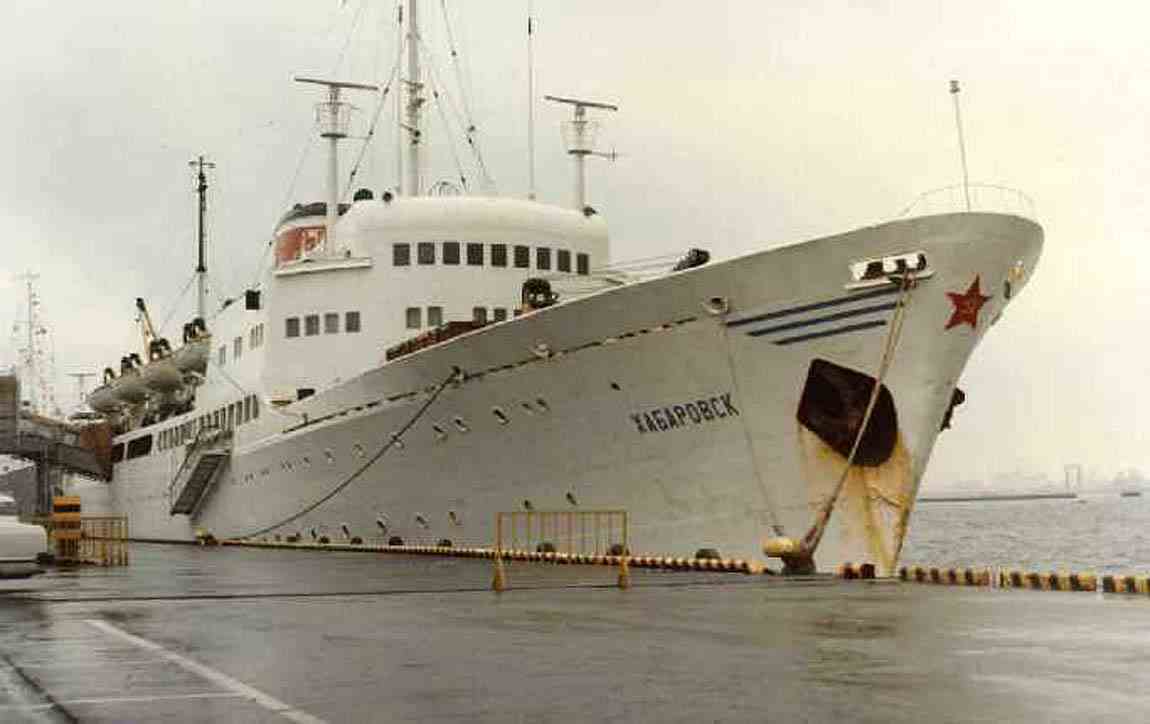
Nakhodka is a port about 85km east of Vladivostok.
In 1985 Vladivostok was a closed military port.
First sightings of the Russian coast.

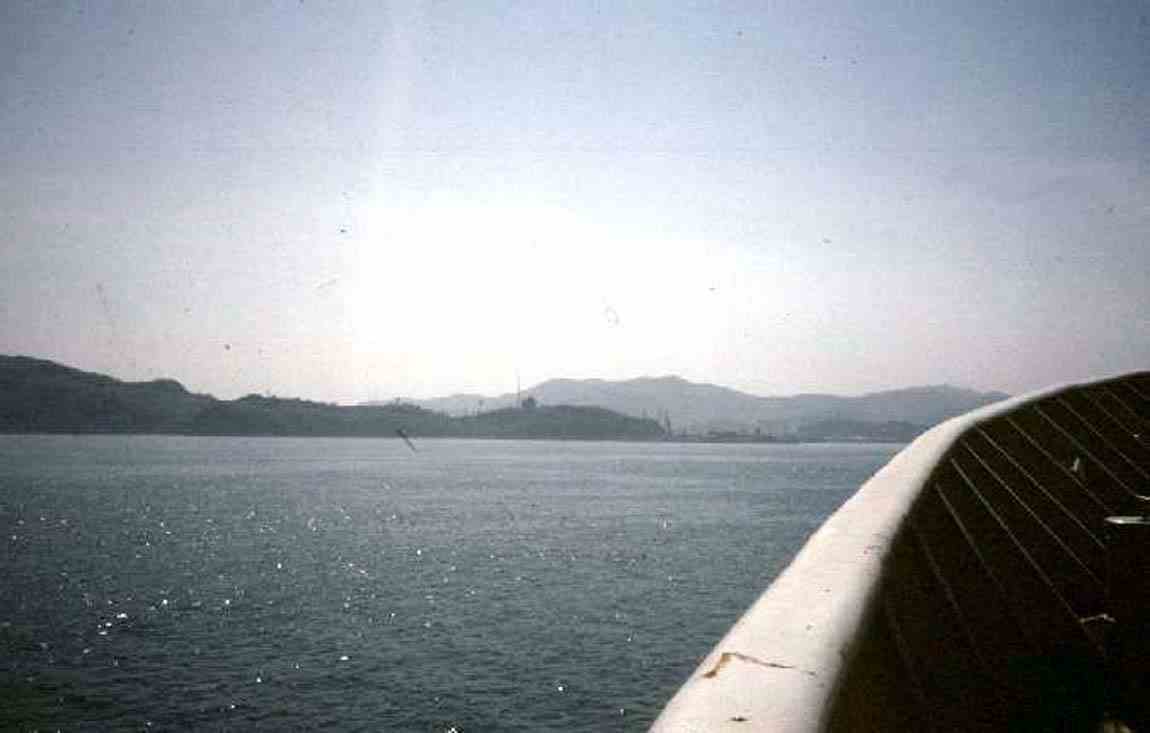

The customs officers asked about magazines and carefully inspected my radio magazines and maps.
We were taken a short distance to the rail station by bus.
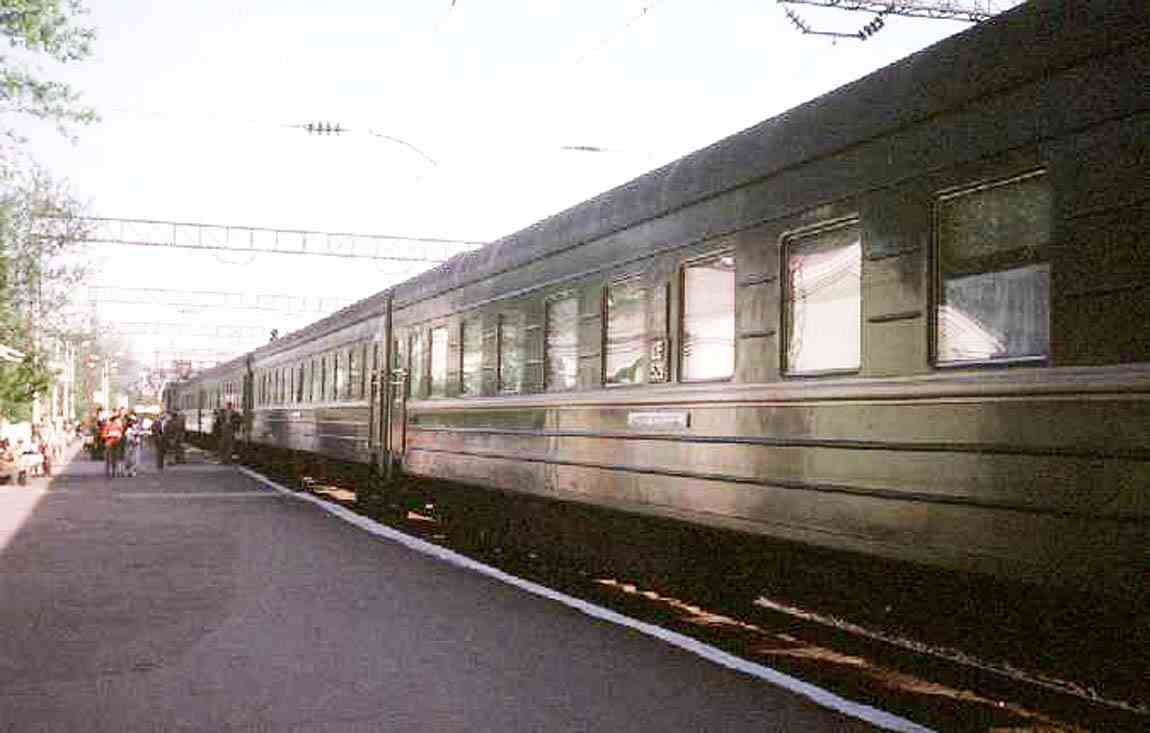
We had a 800km trip from Nakhodka to Khabarovsk. Most of this is along the Chinese border.
This trip is undertaken at night because there are military installations.
Nevertheless it did not get dark until 11pm because of daylight saving time 2 hours ahead of normal time.

Khabarovsk
Khabarovsk is the capital of the Russian Far East (not Siberia) and is 30km from the Chinese border and 7 hours by jet from Moscow.
We stayed 2 nights at the Intourist Hotel.
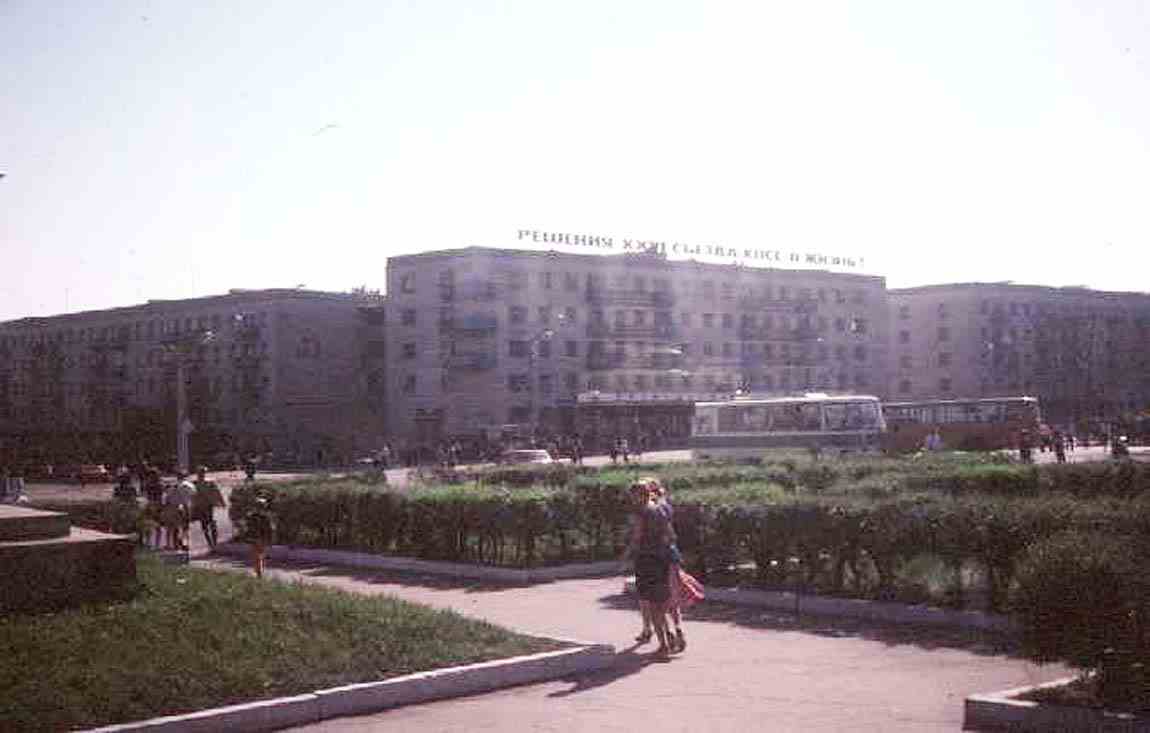
We had a launch cruise on the Amur river in the afternoon.
It is the longest river in the USSR and is 3km wide here in Khabarovsk.

We
were taken on a tour of Khabarovsk and shown all the monuments
and had the communism system explained to us.
Children were guarding this monument to the 2nd
world war and we saw the changing of the guard.
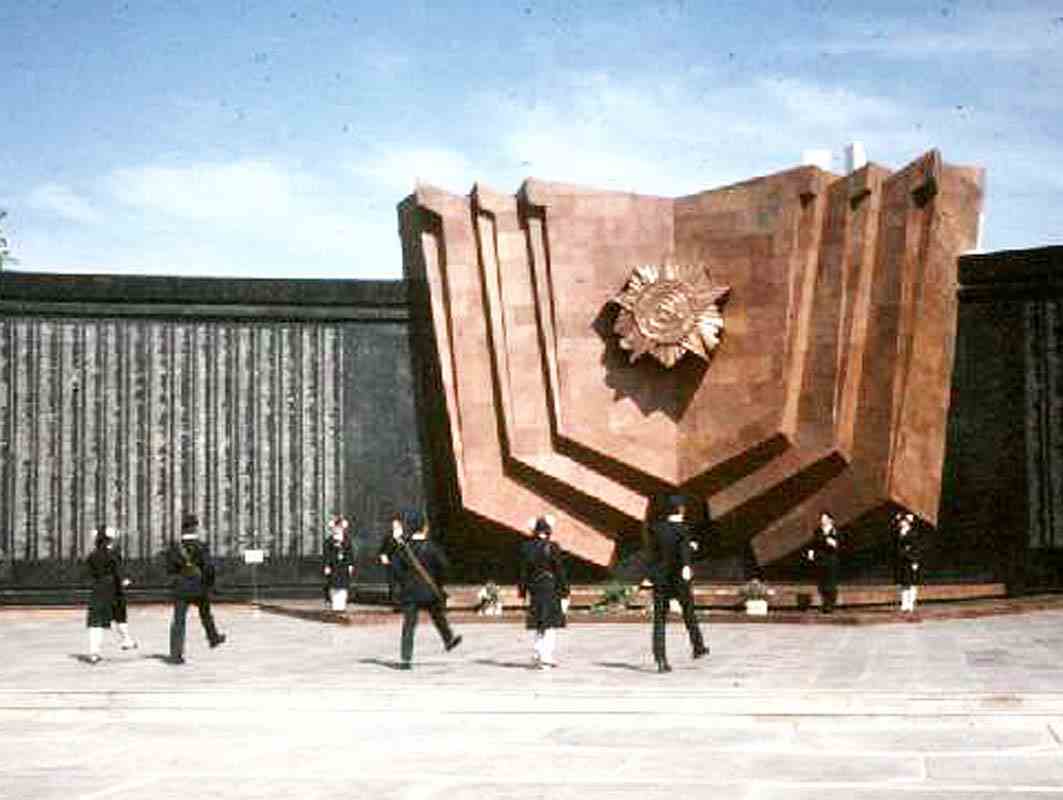
We walked to a local theatre at night
for an excellent Russian folk concert.
It was very bight and colourful with balalaikas and
accordions.
There was one very large balalaika, the size of a double bass.

At 10pm we strolled back to the hotel. It was still light, warm and no cars on the road.
We had 3
nights on the train from Khabarovsk to Irkutsk.We passed through areas
forested with birch trees.
The train stopped at a large number of stations on the way.
It does not blow its whistle when about to start.
At one station, Birobydzhan, we were watching a goods train being
loaded with logs passing through the adjacent platform;
suddenly our train started moving and a hurried climb aboard ensued.
As we were having tea on the first night in the restaurant
car, the train passed through a long tunnel and we had to eat in the
dark for 10 minutes.
There was a babushka
(conductresses) at each end of each carriage. They kept the samovar
boiling with tea available 24 hours.
We got on well with them, communicating with them in sign language
… 5 fingers for a 5 minute stop etc.

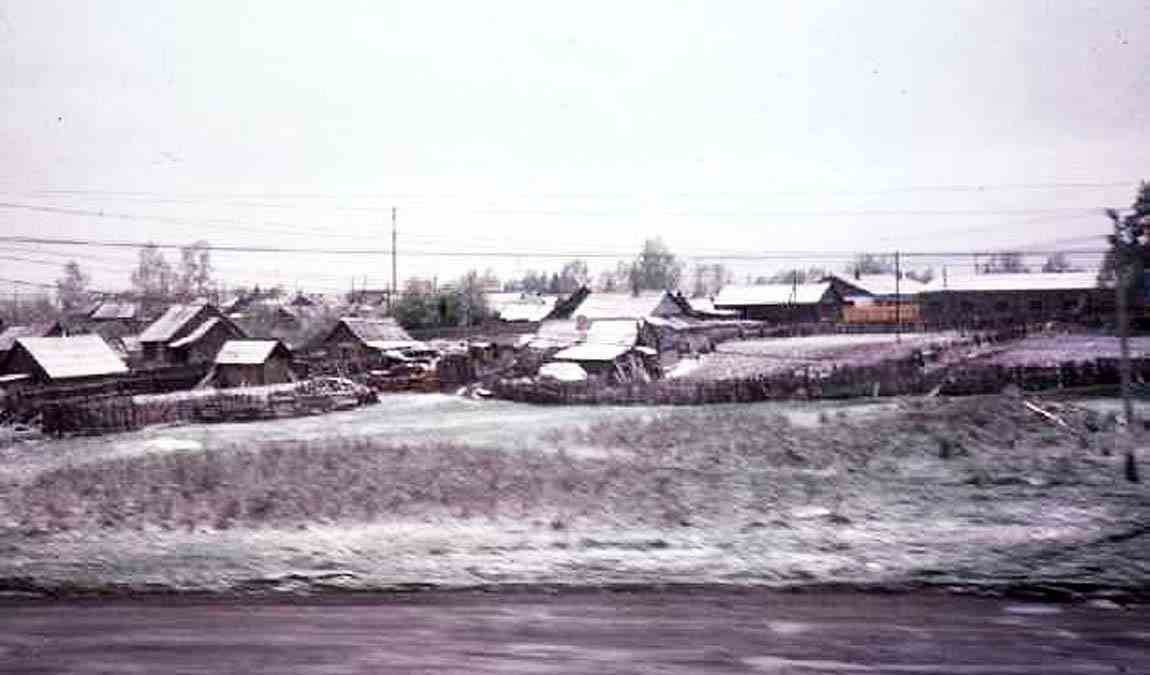
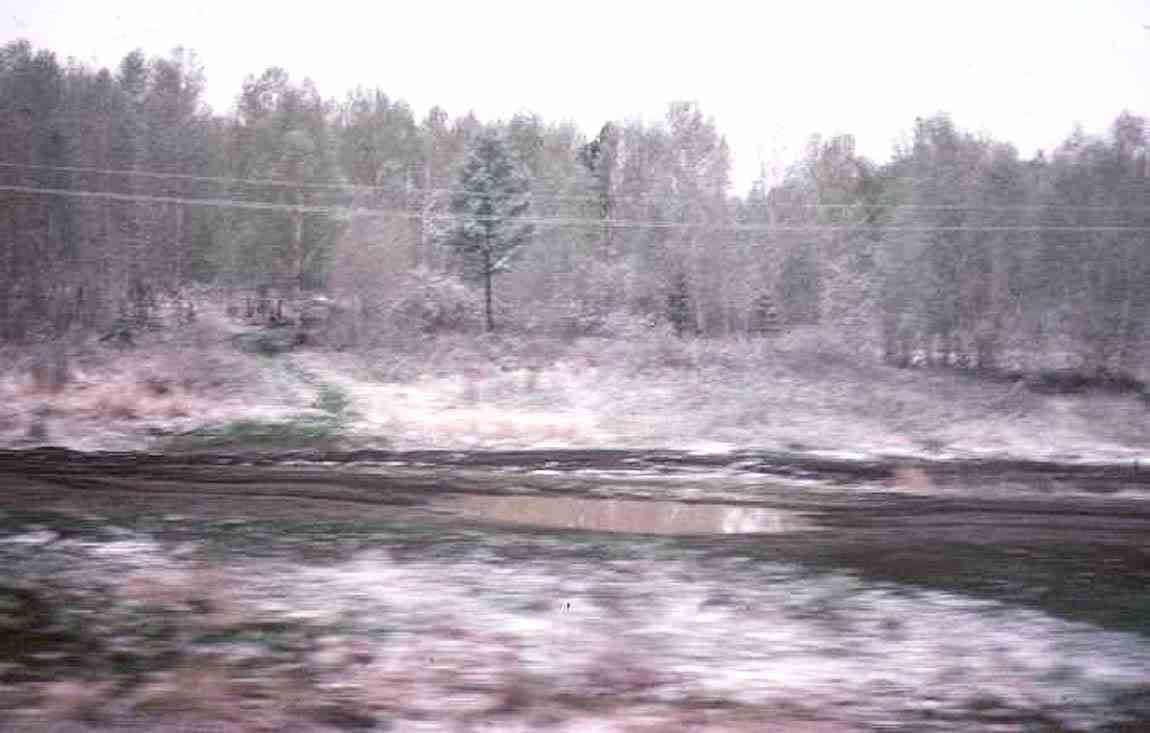

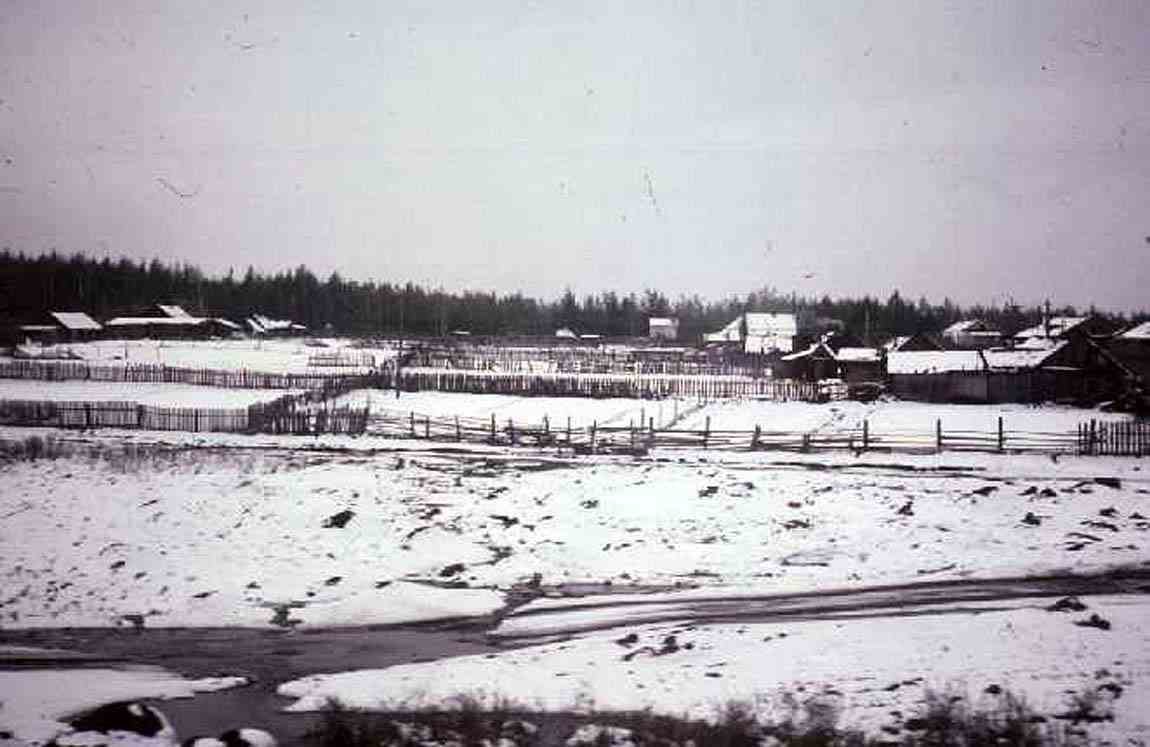
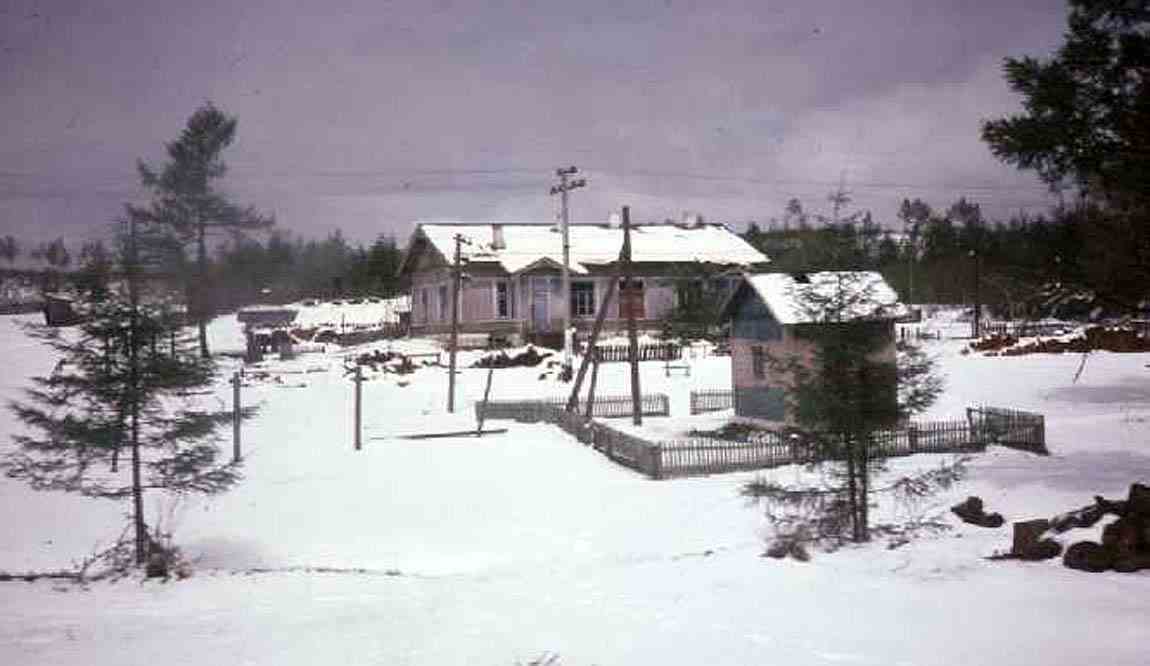
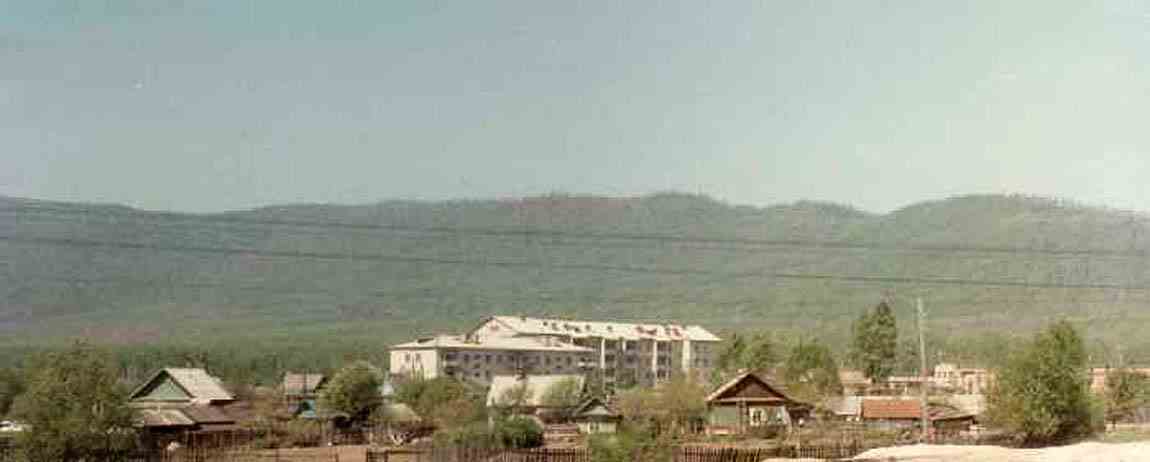
We pass a goods train going to the Asian coast every 2 minutes … it is the cheapest way of getting freight from Europe to Asian countries.

meat & mashed potato & peas, salami, beef & potatoes, omelette, borsch, caviar, wiener schnitzel, coffee, biscuits & champagne.
At each station where the train stops
there are stalls where local people produce (eggs, pickles, honey, jam,
pancake type cakes,
sweets, meringues, badges and chemist items.) The Russian travellers on
the train buy their food from these stalls.
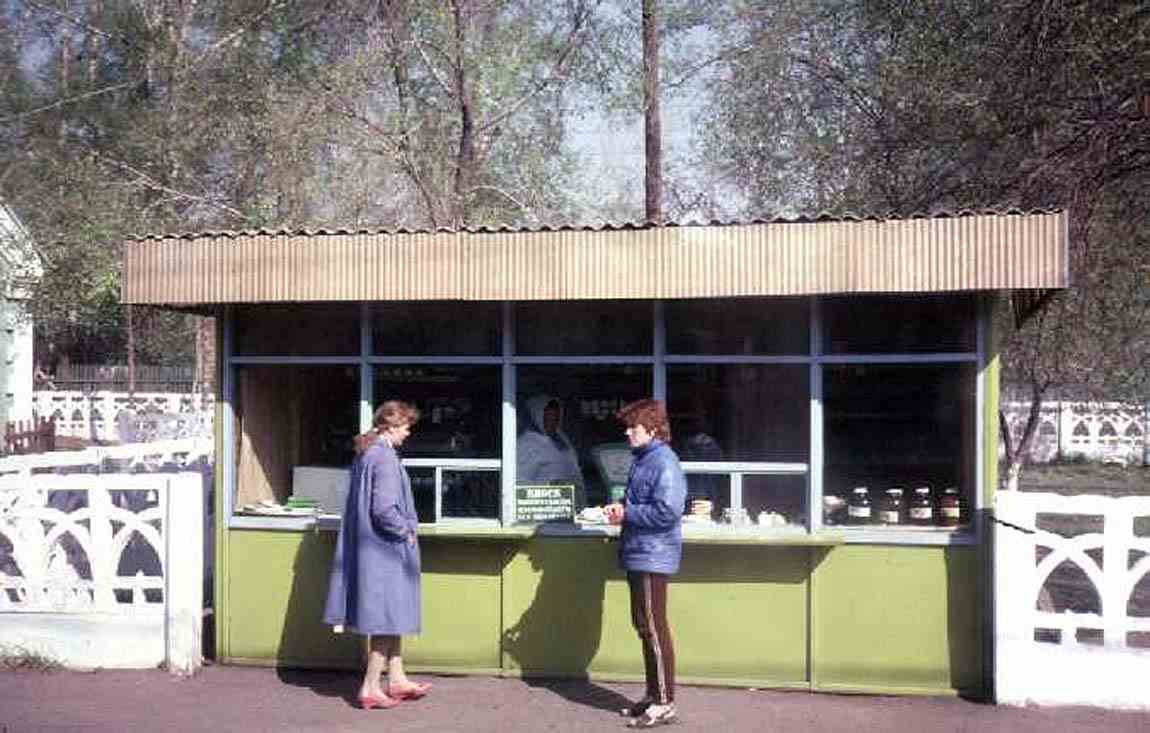
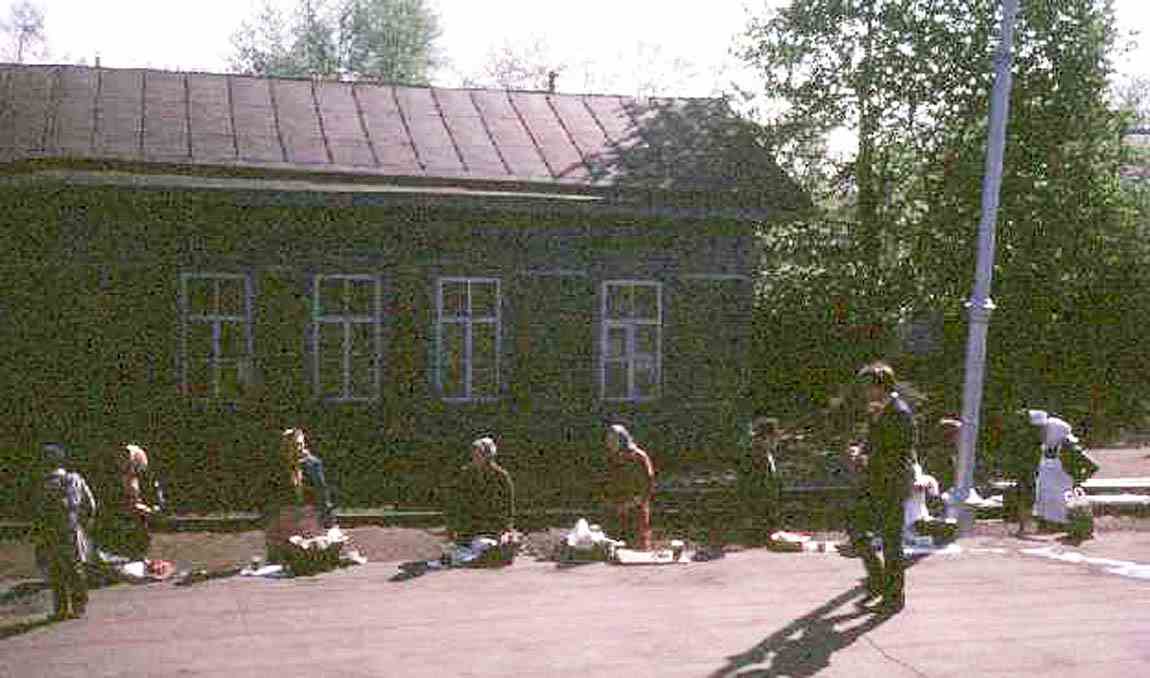
Russians have their big meal in the middle of the day and they have an entrée before their soup.

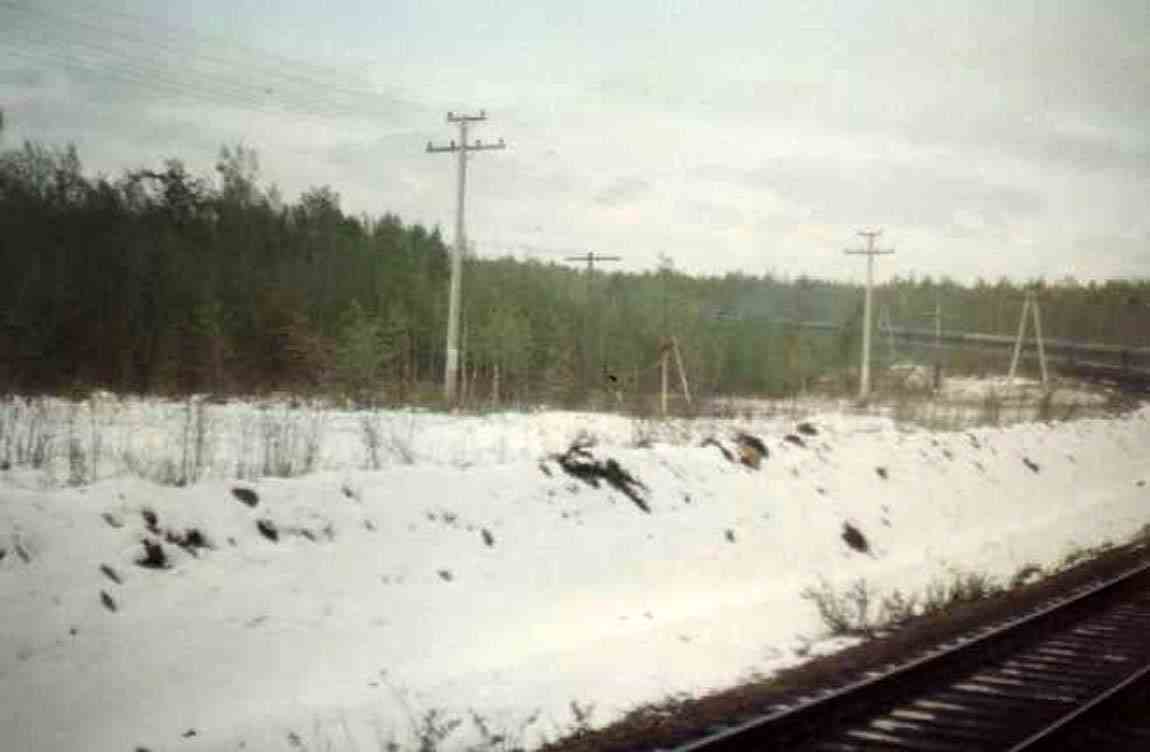
At Petrovsk Zadaykalski station there are monuments to the earliest revolutionaries who attempted to overthrow the Tsar in 1830.
They failed and were banished to this area of Siberia.


Irkutsk
Irkutsk is a spectacular baroque city, one of the earliest bastions of the East Russian Empire.
The Angara River flows through the city. It is the only river to flow out of Lake Baikal.
It is quite a wide river because they have a dam on it to produce hydro-electricity.
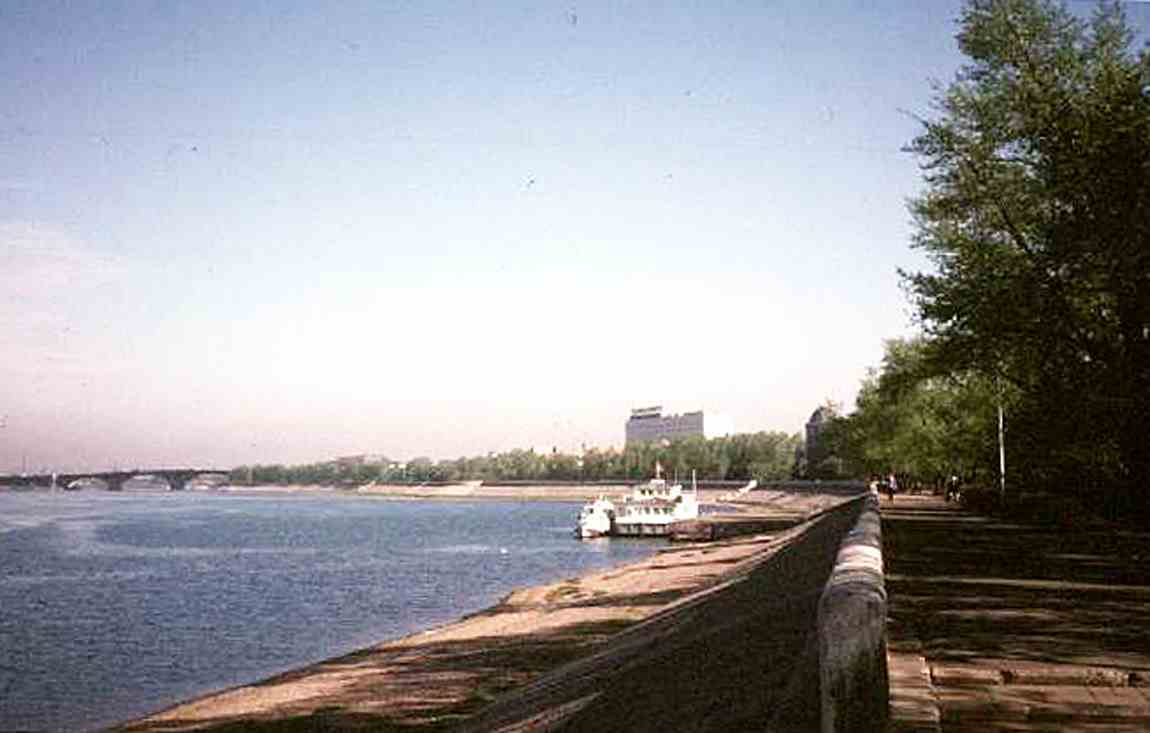

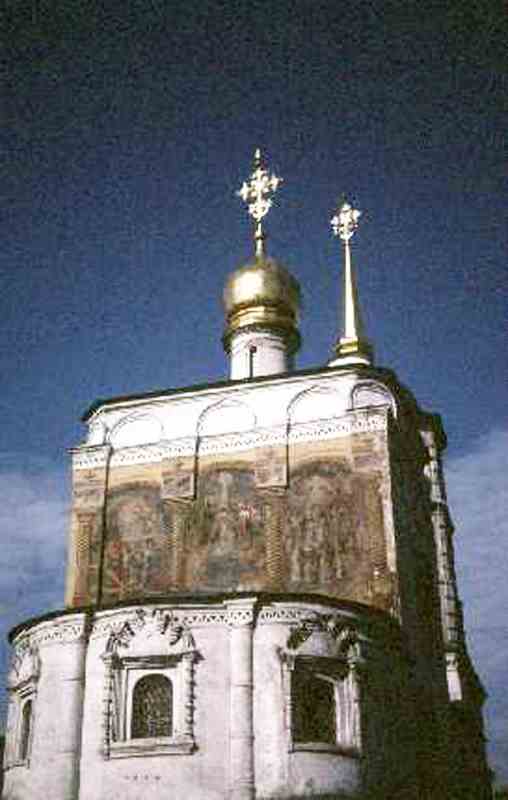

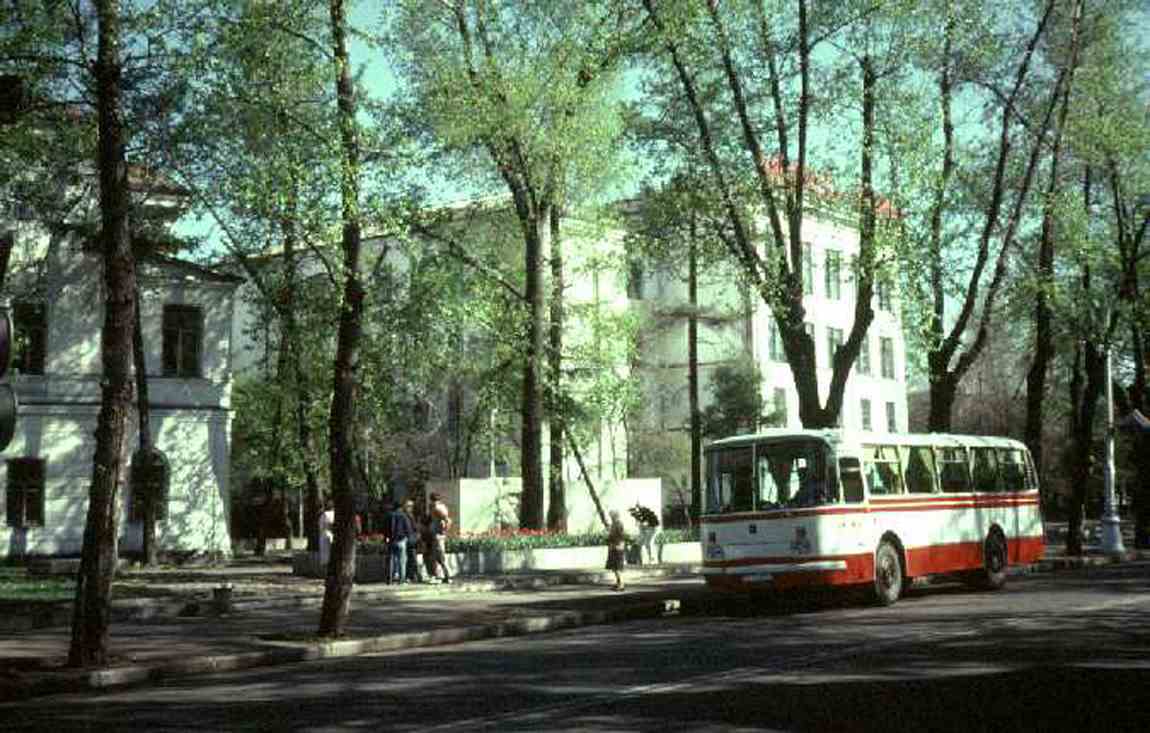
Notice the female gardeners tending the plants.
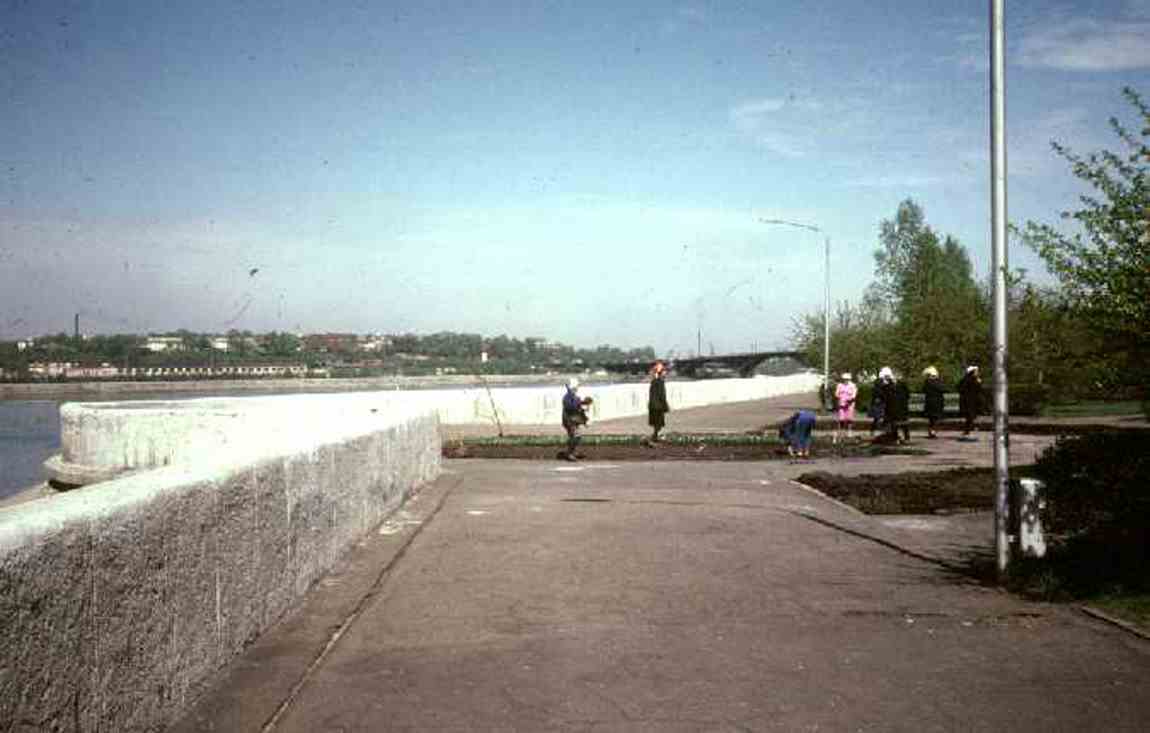

1985 was the 40th anniversary of the end of world war 2. We were taken to a museum that had a special display about the war.

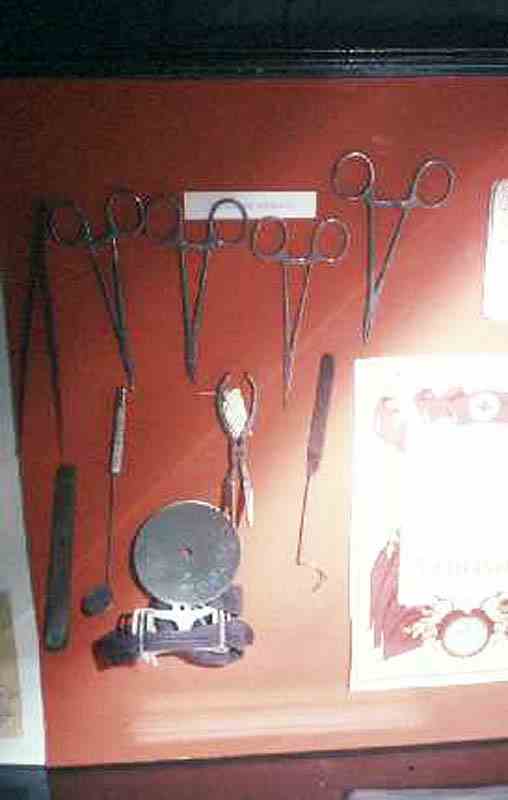


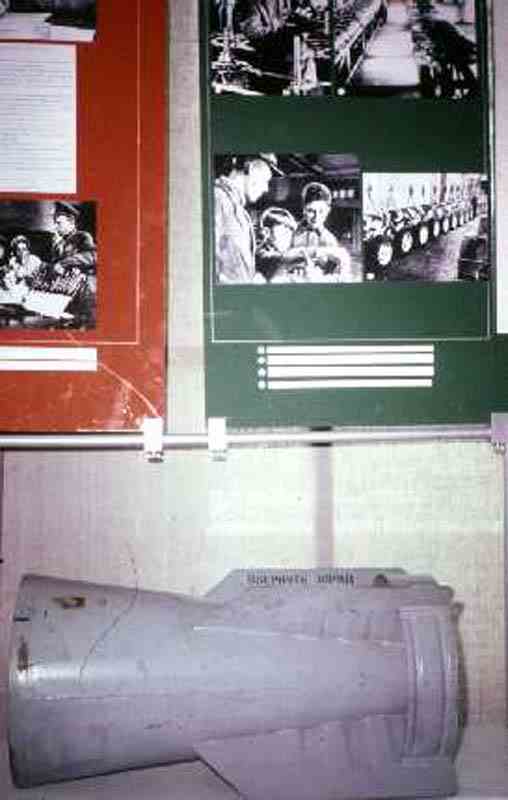
Lake Baikal
The largest and deepest freshwater lake in the world. It is so deep that new fish species are still being discovered in its depths.
336 rivers flow into this lake and only one, the Angara River, flows out.
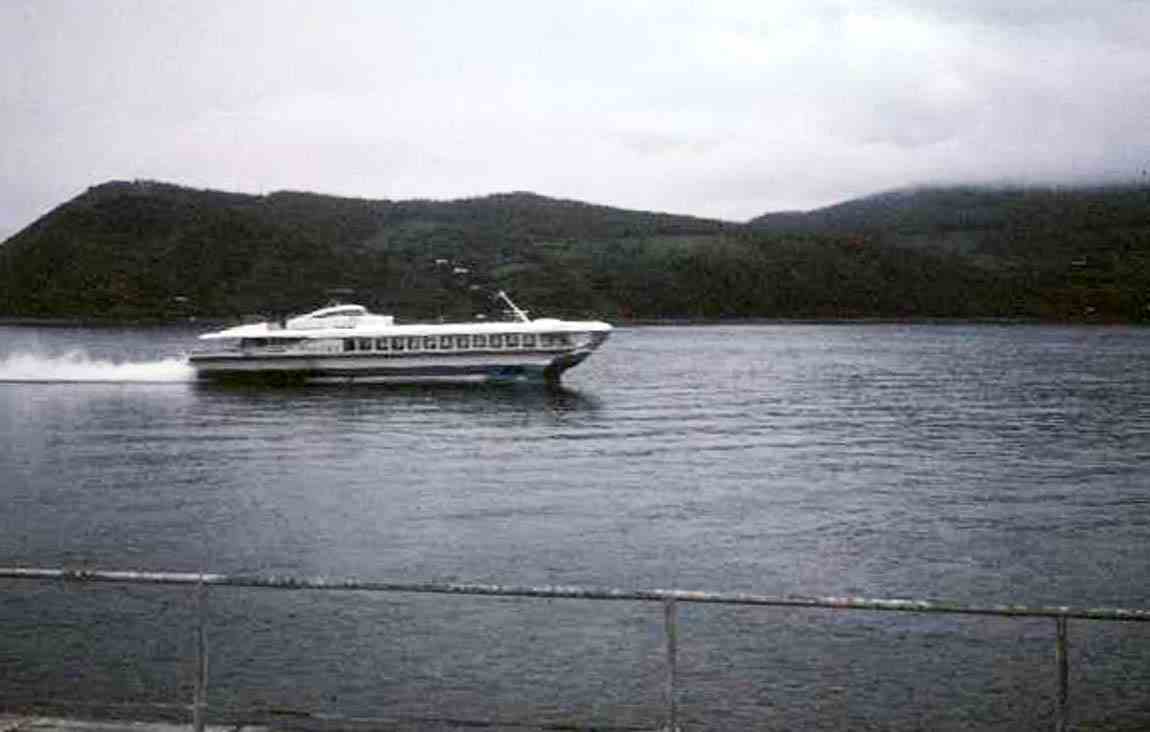


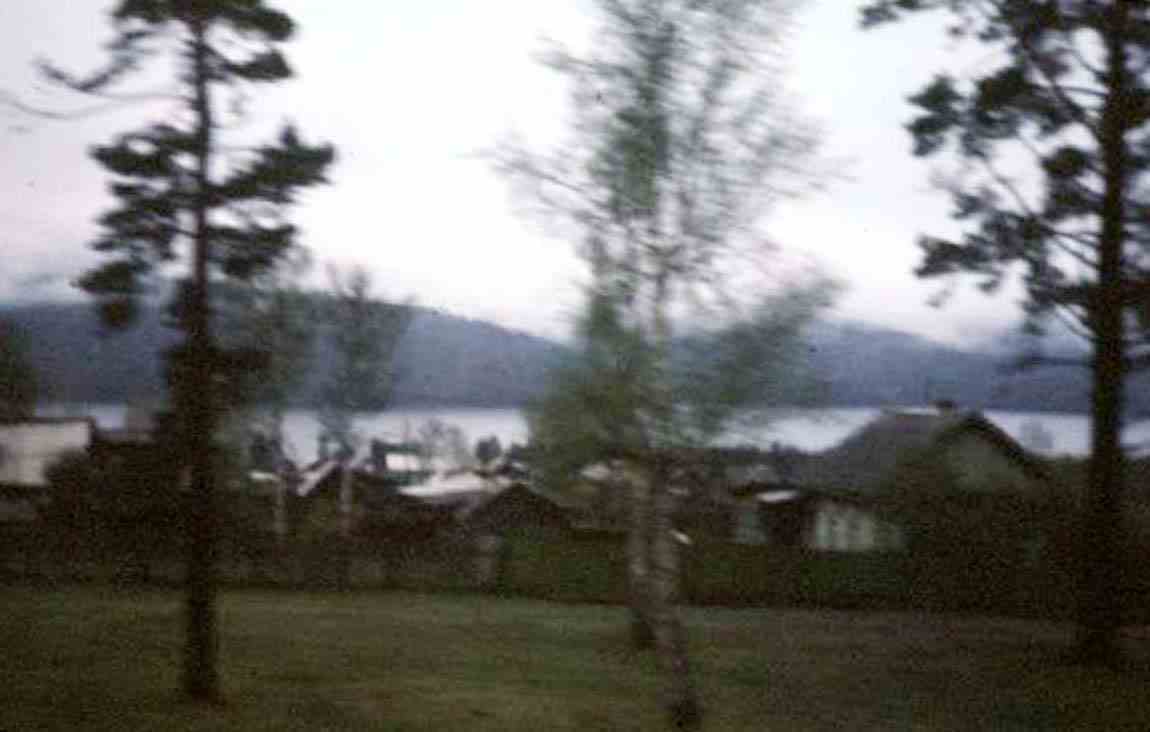
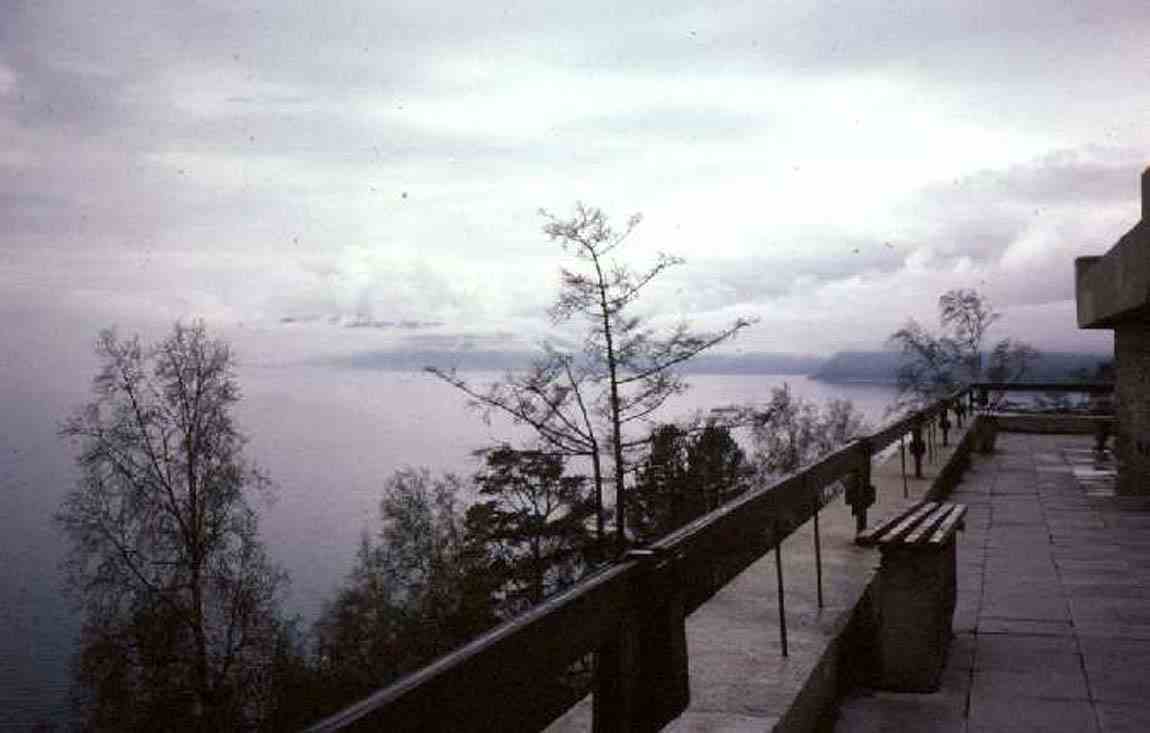
This is a poor photograph of handkerchiefs tied onto tree branches.
Newly weds tie them onto the branches and make a wish for good luck.
A rumoured tradition is that to test a new wife's fidelity, she was left to swim across a 200metre stretch of the lake in freezing cold water.

A Russian fuel station.

A Russian tractor.
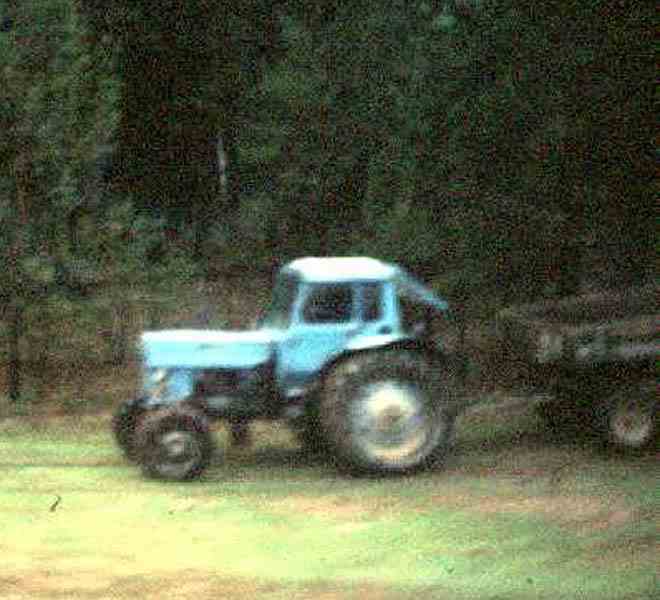
We had 4 days on the train from Irkutsk to Moscow.


On the second day we passed through Novosibirsk which is the capital of Siberia and the 4th largest city in the USSR.
Novosibirsk means new Siberia.


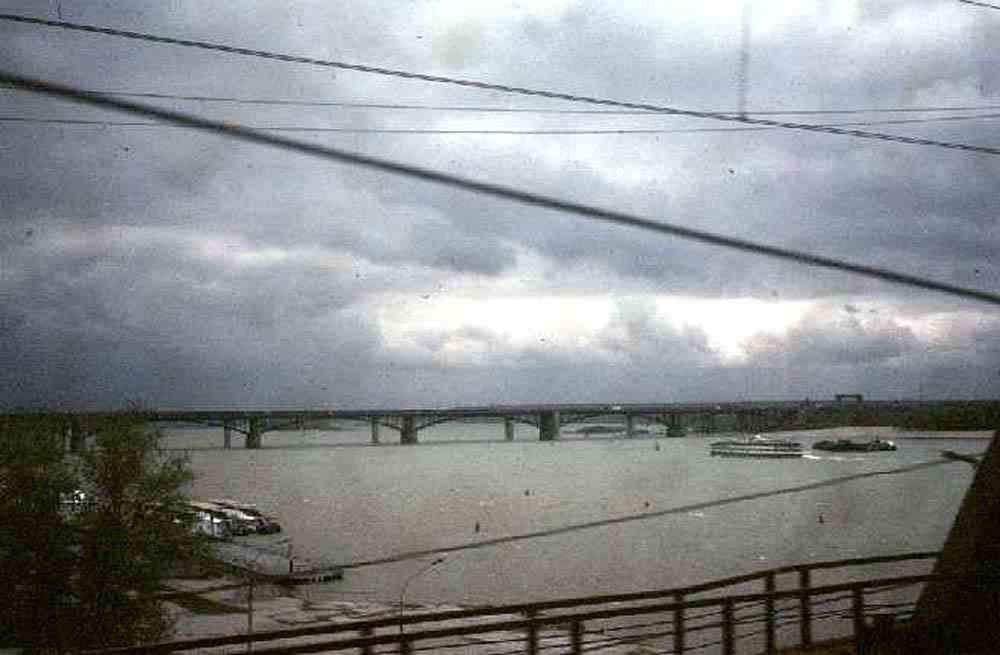
I had the Russians around my little finger. I showed them pictures from my photo album and from a book of Australian photos.
I started showing the children pictures of my family. I quickly had an audience of about 15, including 4 soldiers.
There was a picture of Como House in Melbourne in the book as they thought that it was my home.
They were fascinated with pictures of lorikeets and beaches. Most of them would not have been to a beach.
They were staggered at the distance that we were travelling - all the way to London.

On the 3rd day (June 1st) we passed an obelisk in The Urals marking the boundary between Asia and Europe, 1777km from Moscow.
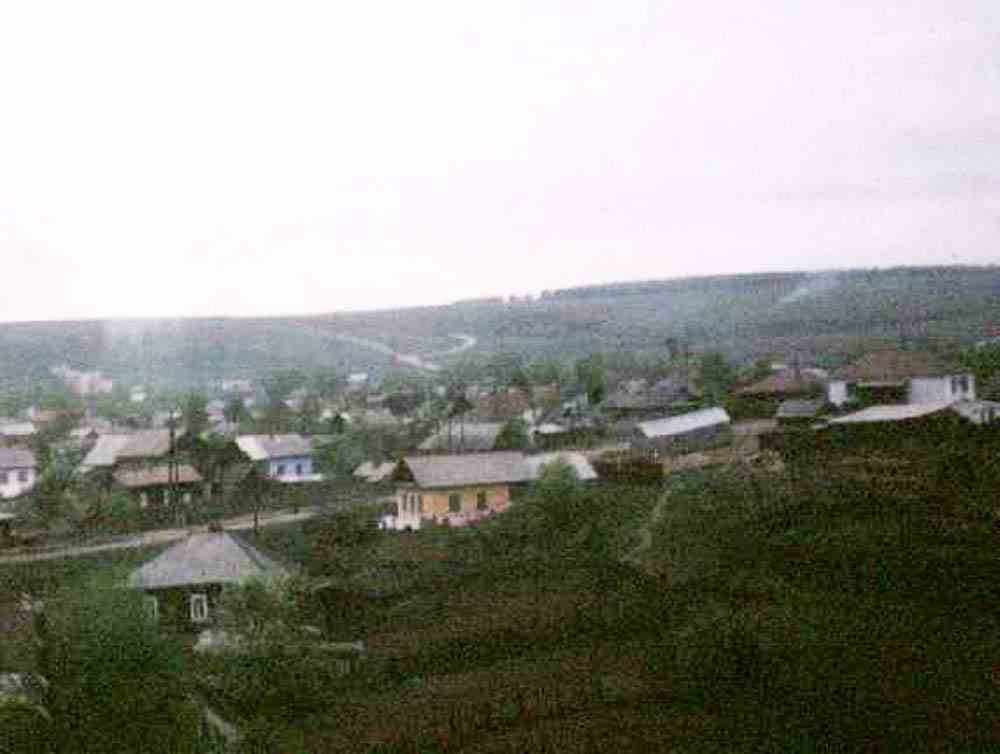
Moscow
Moscow was founded in 1147 and its population is more than 8,000,000 (more than 11,000,000 when visitors are included.)
We had a comprehensive tour of the sights of Moscow.
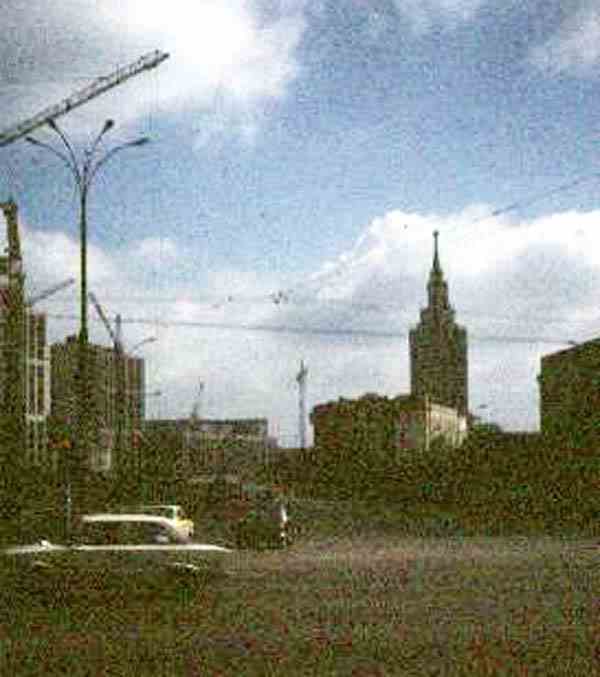
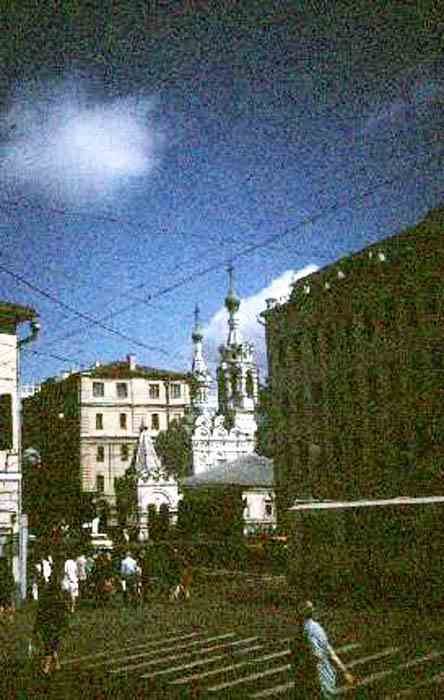
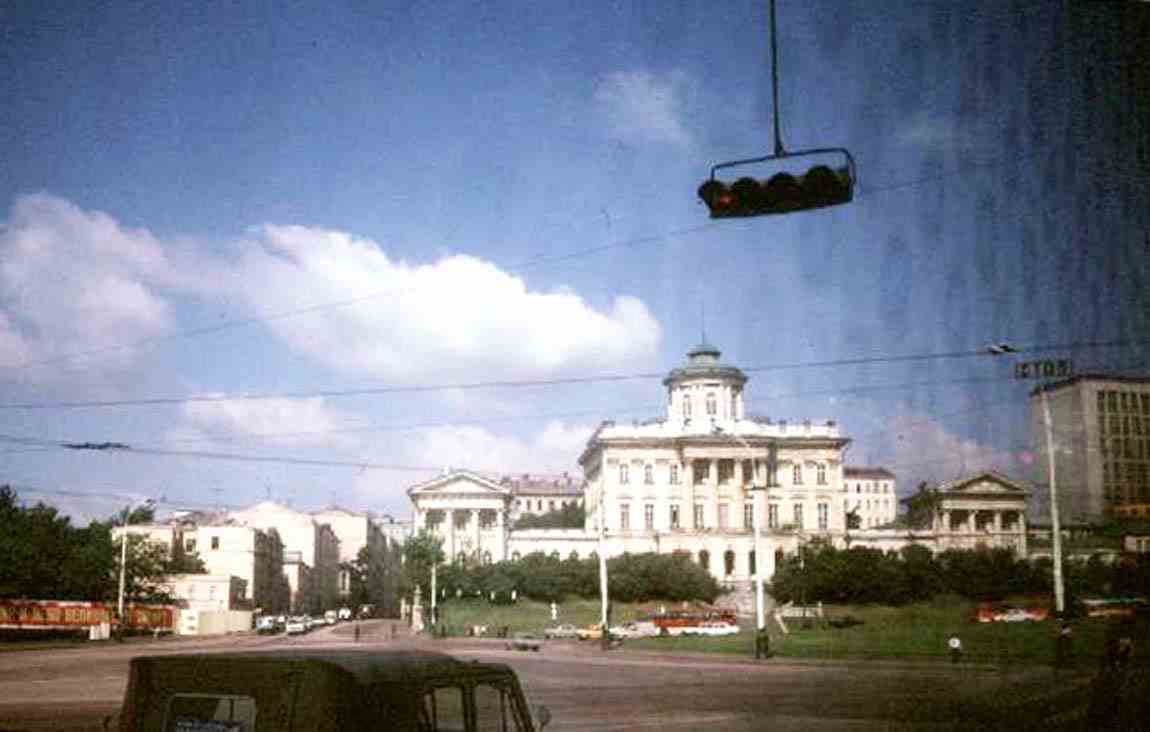
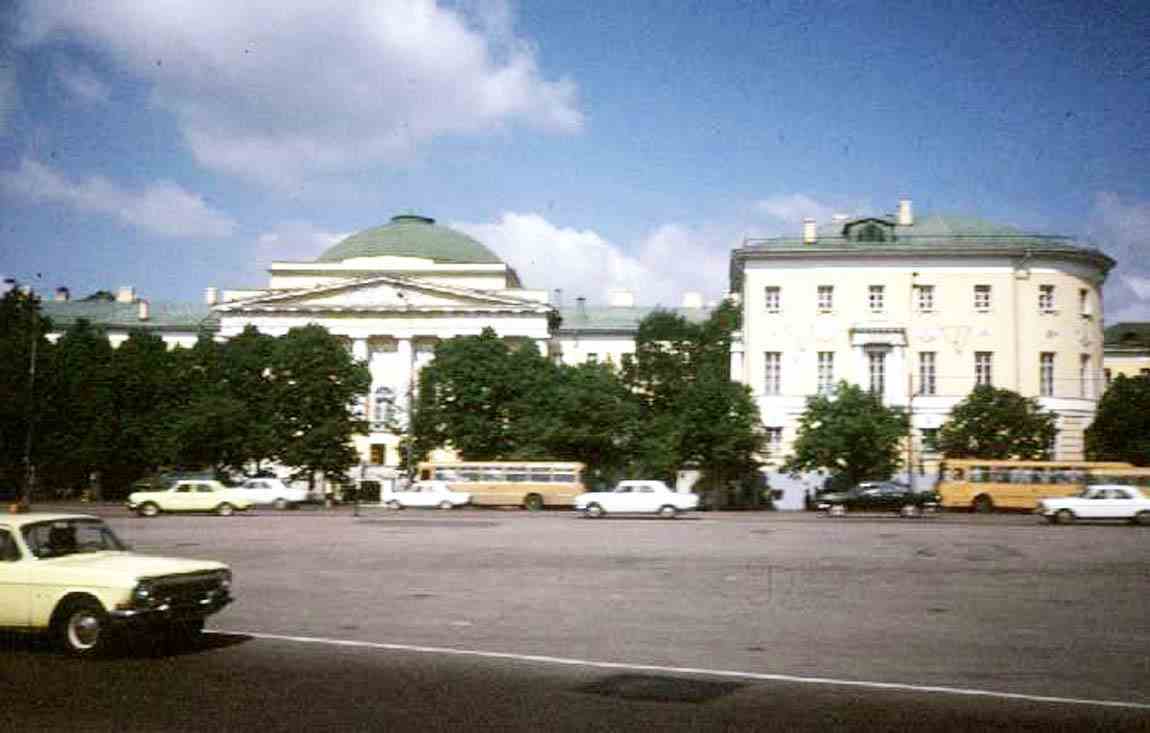
A Moscow "Skyscraper"
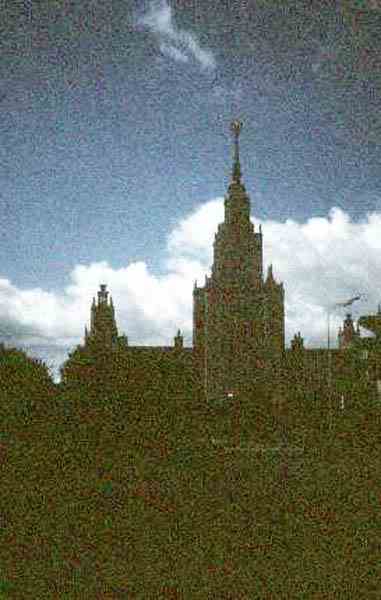
Moscow State University
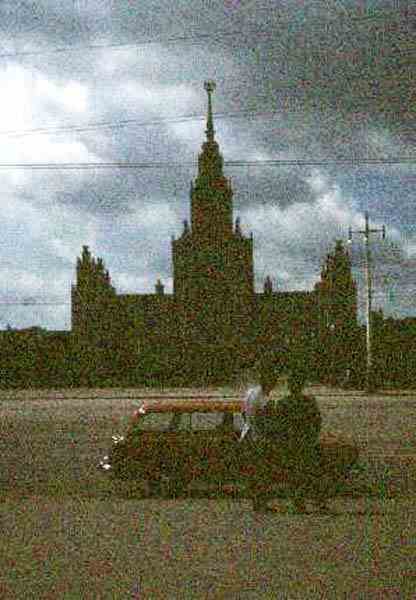
The New Nunnery (Novodevichiy Convent).
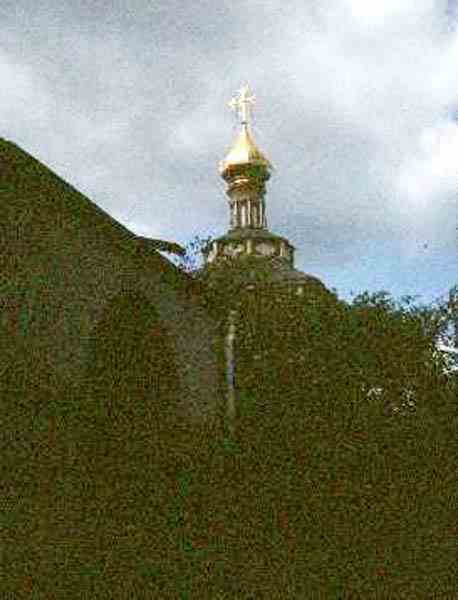
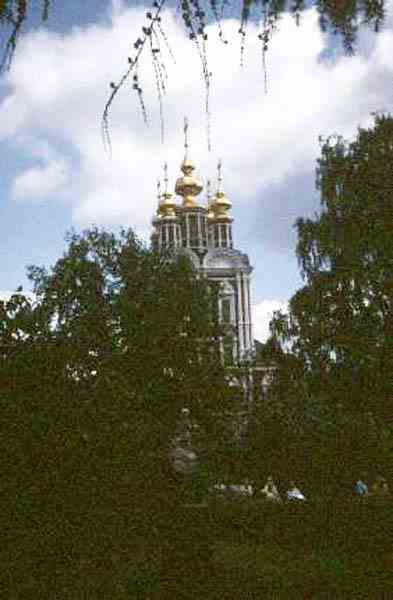
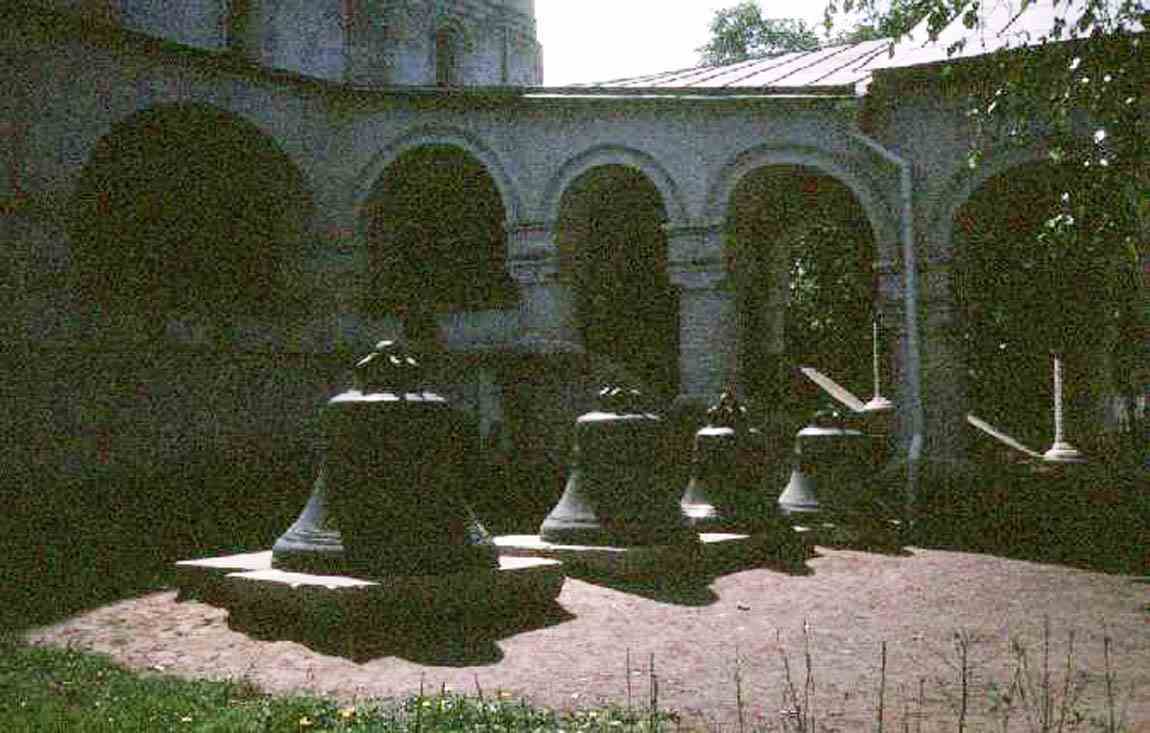
The Moscow river flows through Moscow.
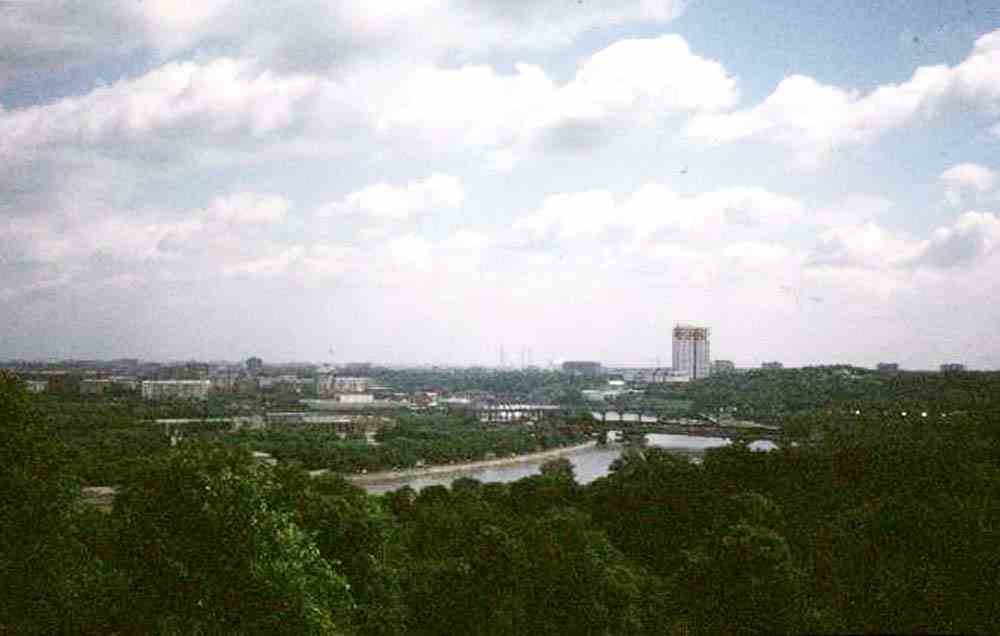
Lenin Stadium in Moscow, the venue for many of the 1980 Olympic Games events.
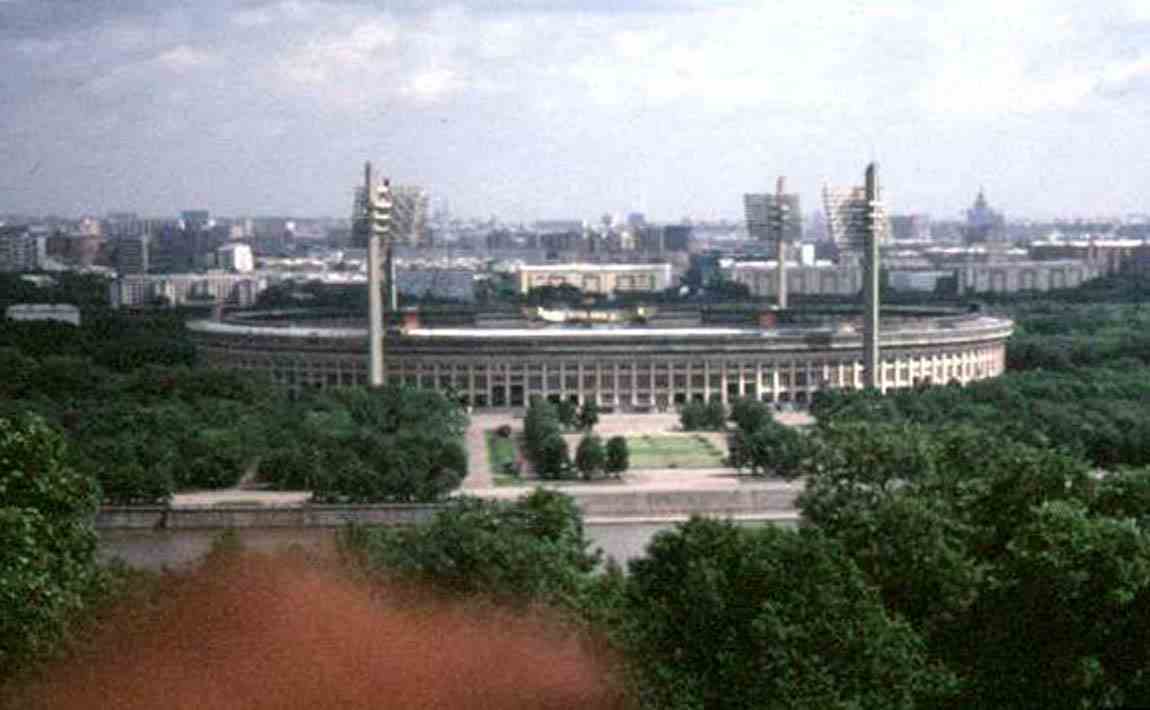
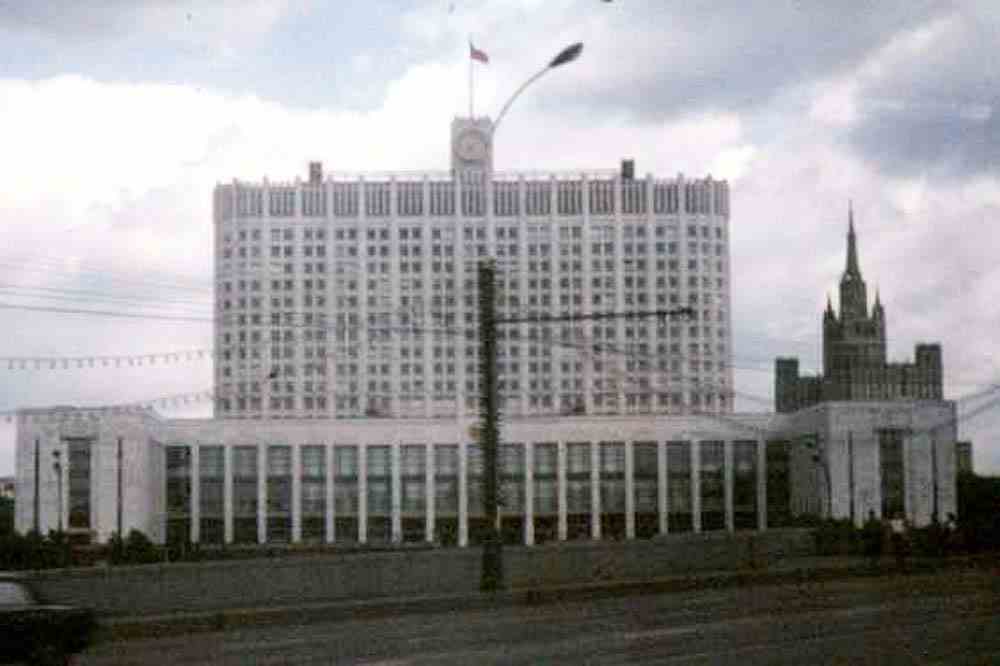
The Hotel Rossia. It was adjacent to the Kremlin and has 3200 rooms.
It was the largest hotel in the world until it was surpassed by the Excalibur in Las Vegas, Nevada in 1990.
It remained the largest hotel in Europe until its 2006 closure.
We stayed here on our 1999 visit to Moscow.
Demolition of the building began in 2006 for a planned entertainment complex.
The project was to be overseen by British architect Sir Norman Foster and would have included a new, two thousand room hotel with apartments and a parking garage. In Later in 2006, the Supreme Arbitration Court cancelled the results of a tender to reconstruct the Rossiya hotel near the Kremlin.
The hotel's site remained vacant until 2013, when it was announced that Zaryadye Park would be developed there.
The park opened in November 2017.

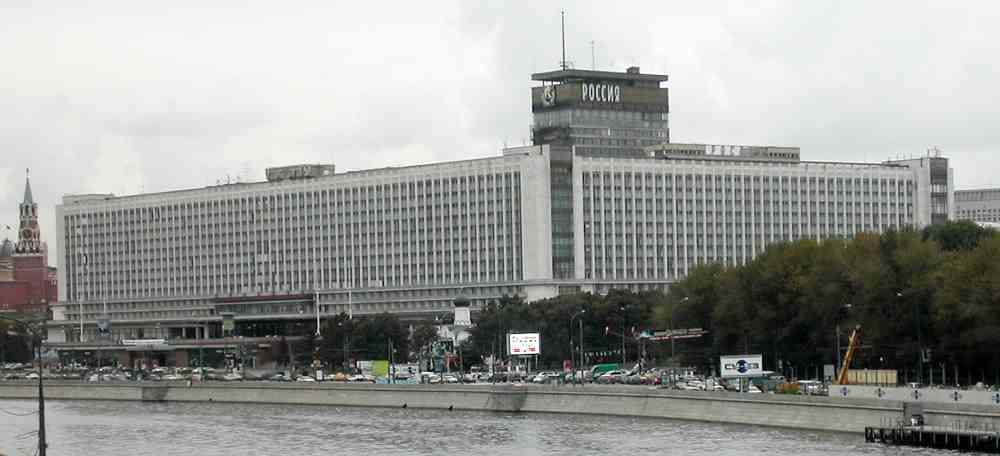
A 2018 picture of Zaryadye Park built on the site of the former Rossija Hotel.
It is the first public park built in Moscow for over 50 years and incorpoates a large multi-pupose concert hall.

The Cosmos Hotel in Moscow where I stayed. It was built for the 1980 Olympics and has room for more than 3000 guests.
Russian Space Memorial which is covered in titanium was acroos the road from the hotel.

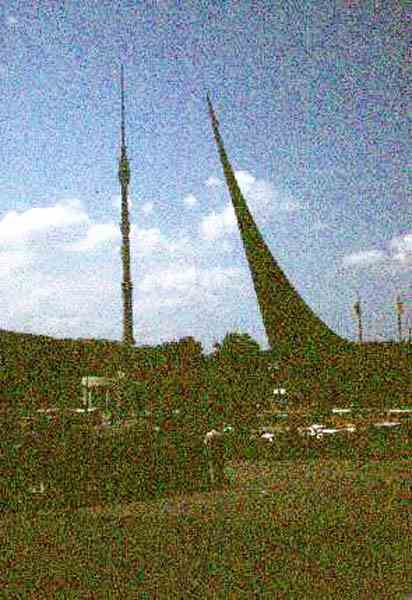
The view from my hotel room.
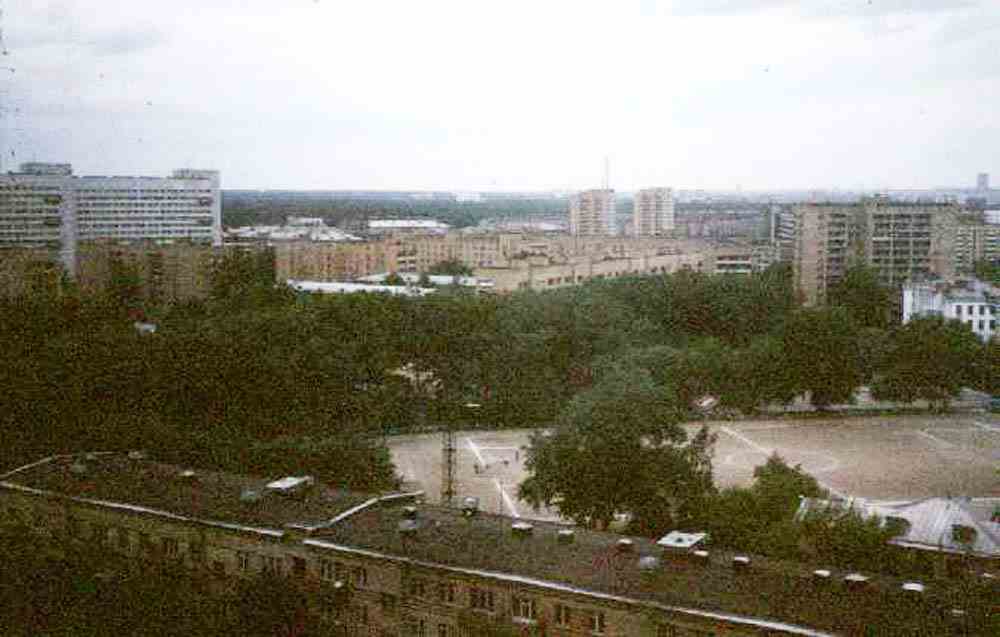
At the Zagorsk Monastery, 70km north of Moscow.
There were lots of Tsarist items here - carriages, pictures, traditional clothes, glassware, gold items,
guilded coats of arms, and very large books (the size of "The Age").

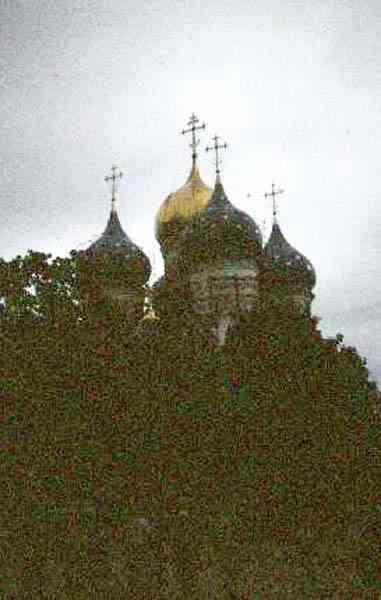
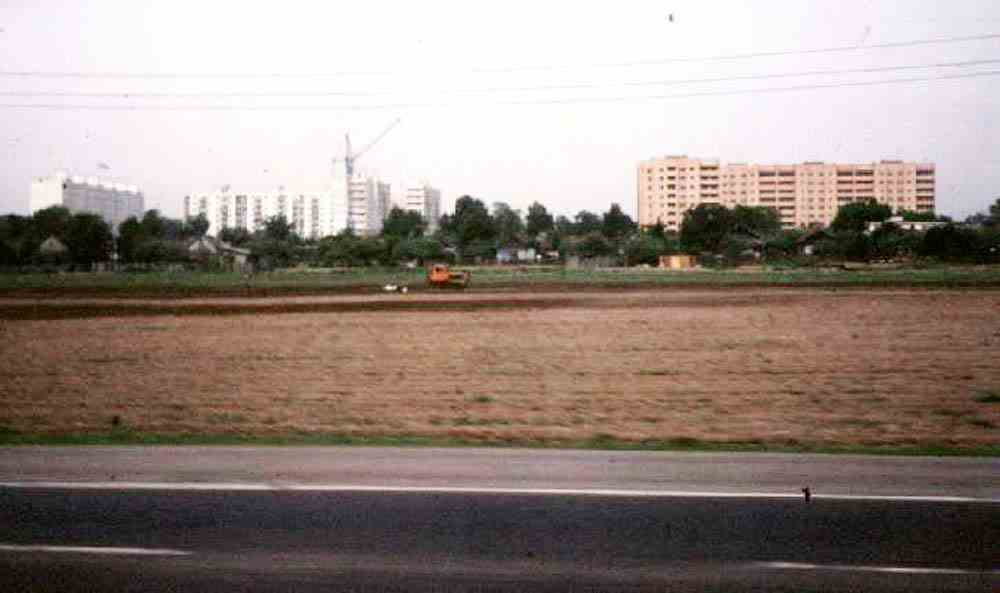
The Moscow metro stations were beautiful inside. Most had chandeliers. They had a very efficient rail network.
You never had to wait more than 90 seconds for a train.
The people were very orderly; they waited on either side of the train door for the departing passengers to exit before they boarded the train.
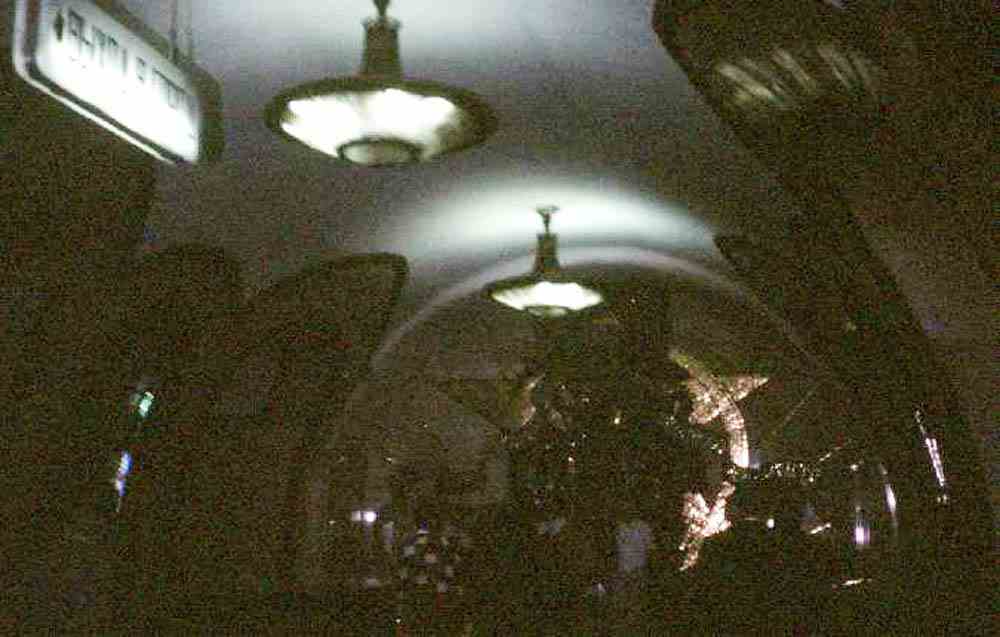


The State Department Store {GUM store (Gosudarstvennyy Universaluyy Magazin)}.

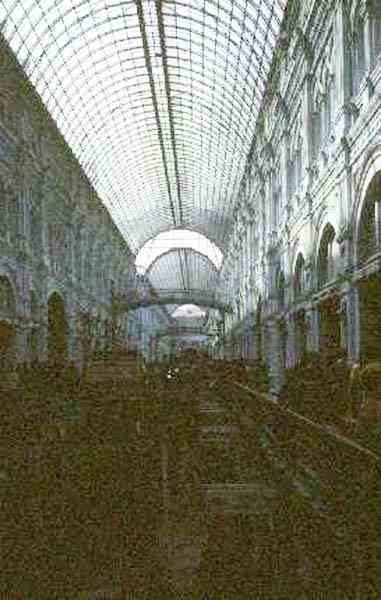
Reading the paper the Moscow way.

The Kremlin
Kremlin means fortress and it was the fortress of the Tsars.
Saviour (Spasskaya) Gate Tower of the Kremlin.


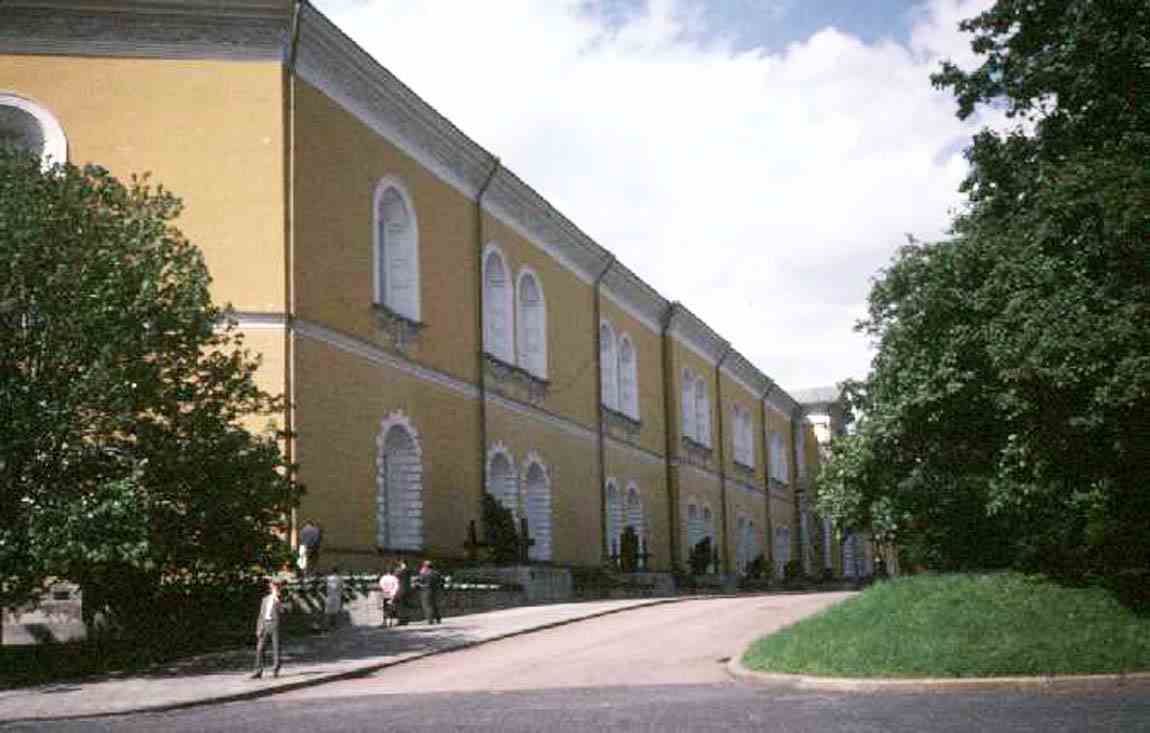
The Tsar-Bell, weighing 220 tonnes, the largest bell ever cast.
Unfortunately it never rang. While it was still in the pit, a fire set ablaze the scaffolding above it.
The burning scaffolding fell down into the pit, and well meaning people started to pour water over it in order to save the bell!
As a result, the bell cracked and a big chunk fell off.

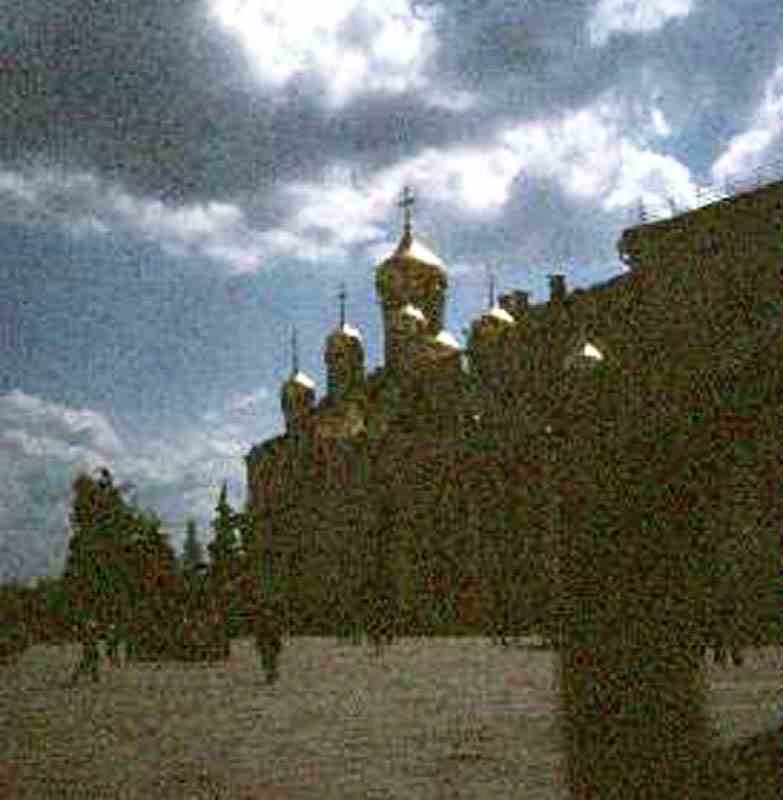
Ilena, our Russian Intourist guide who has been with us since Khabarovsk, and cannon in the grounds of The Kremlin.

The changing of the guard at Lenin's Tomb in Red Square, which borders The Kremlin.
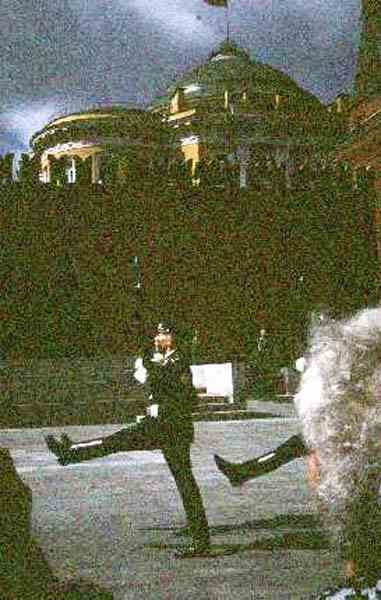

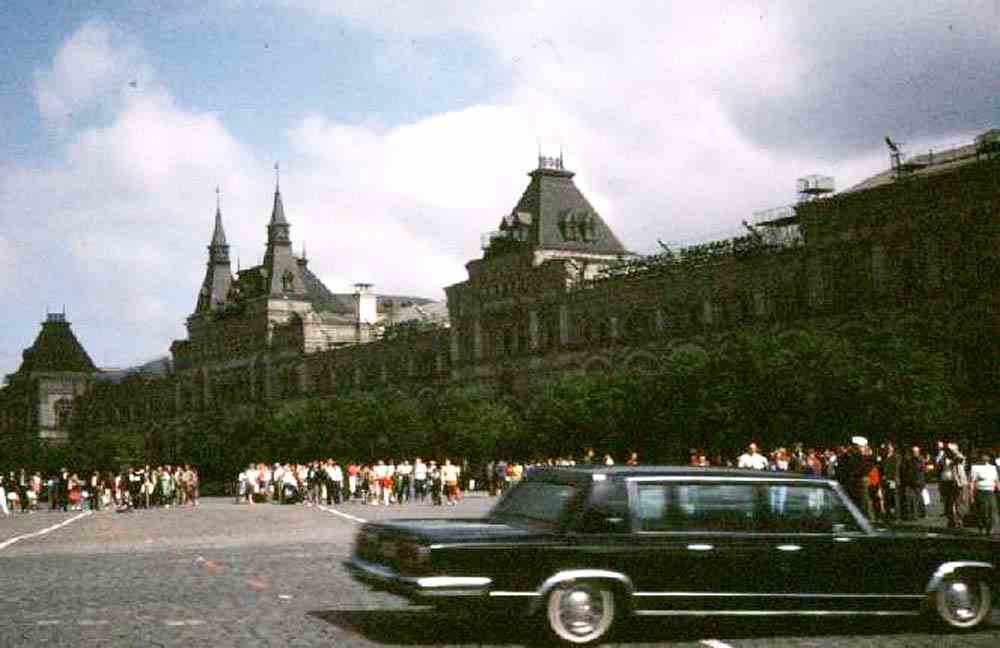
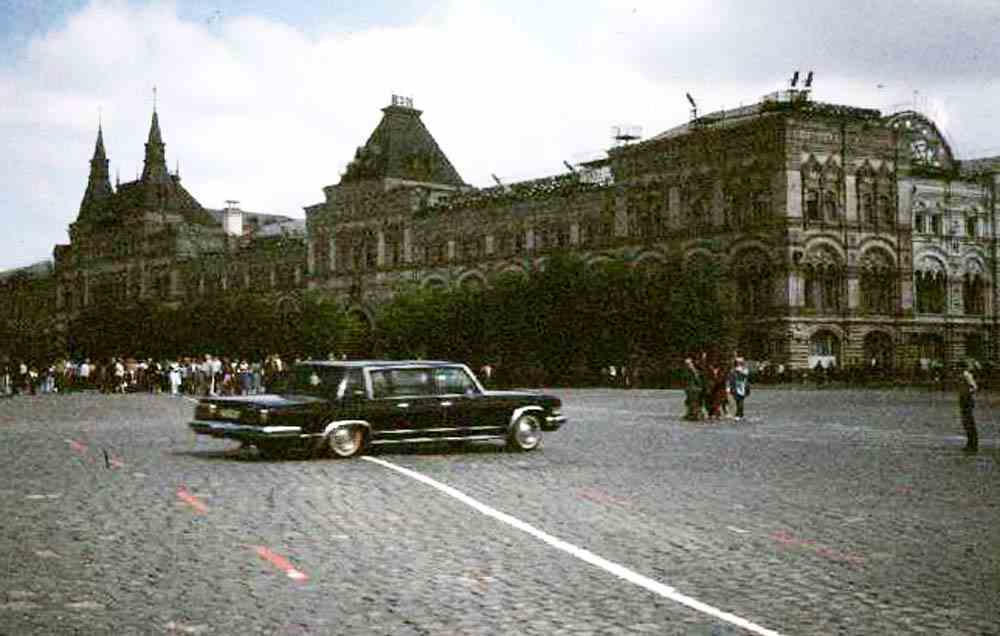

We travelled on the overnight train from Moscow to Leningrad. There were lots of tourist groups on the train.
Lenningrad
The highlight of my 15 week tour.
Leningrad has a population of 5 million and is built on 101 islands in the Neva River delta. There are 366 bridges.
Originally St. Petersburg, its name was changed in 1913 to Petrograd (because of its German sounding name) and to Leningrad on Lenin's death in 1924.
We were taken to the Pribaltiyskaya Hotel on the Gulf of Finland.
It was a modern hotel designed by a young Leningrad architect and built with the help of a Swedish firm.

The spire and dome of the Cathedral of Saints Peter and Paul at the Peter and Paul fortress across the Neva River in Leningrad.
This is where Peter the Great founded St. Petersburg in 1703.
There are a number of tombs of the Tsars inside the cathedral including Peter the Great and Catherine the Great.
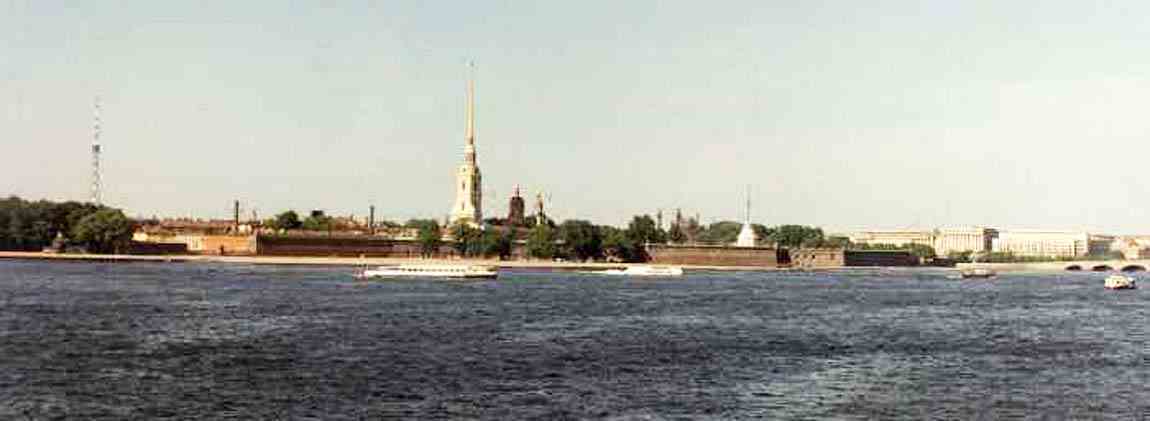
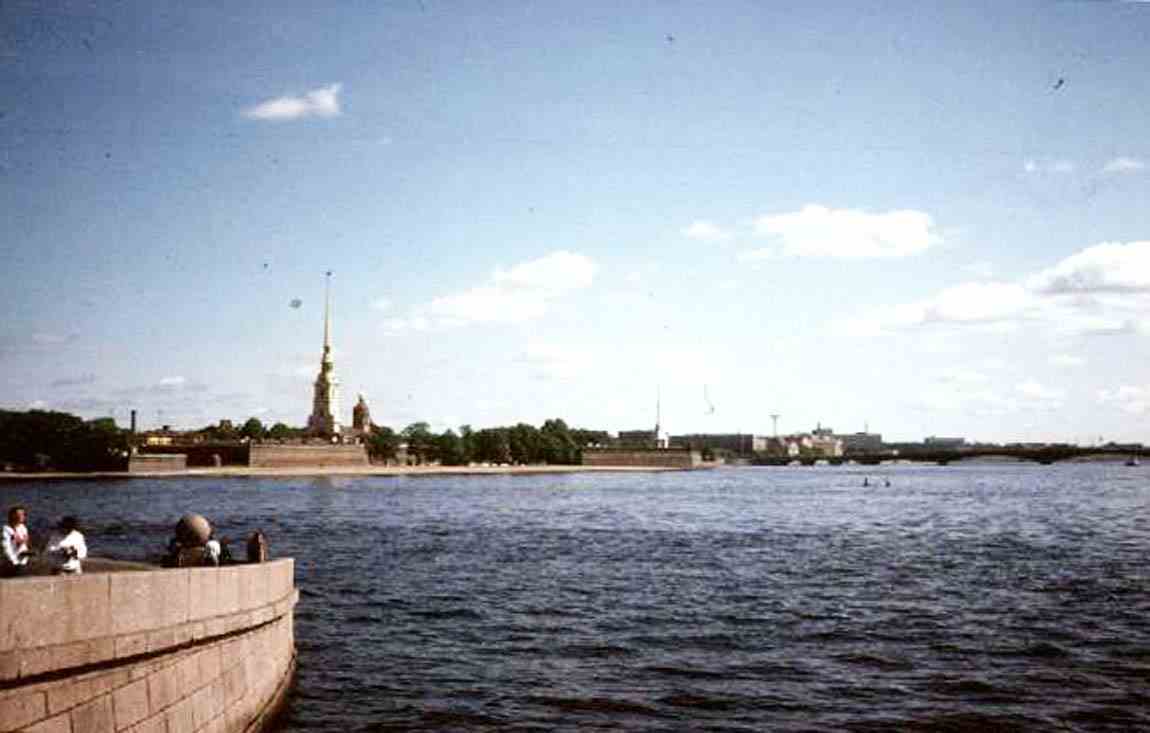
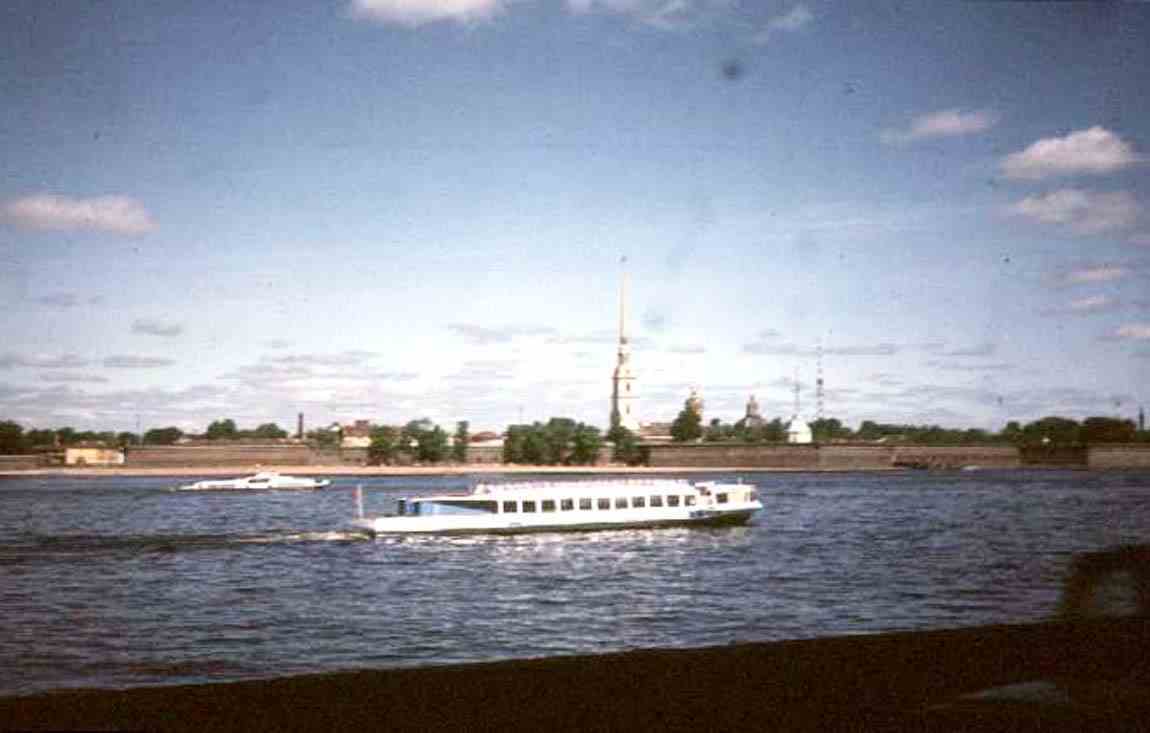
The old stock exchange building (now the Central Naval Museum).
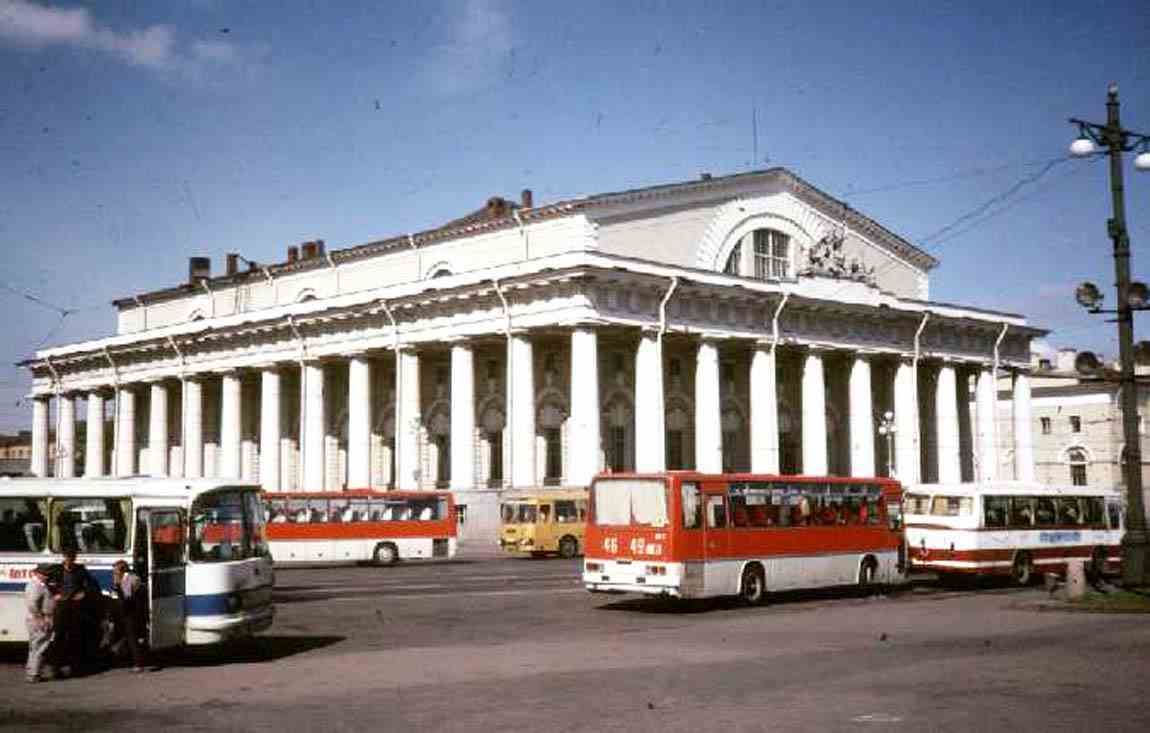
The Rostral Columns with their captured ship prows are in the foreground. They were beacons (lighthouses).
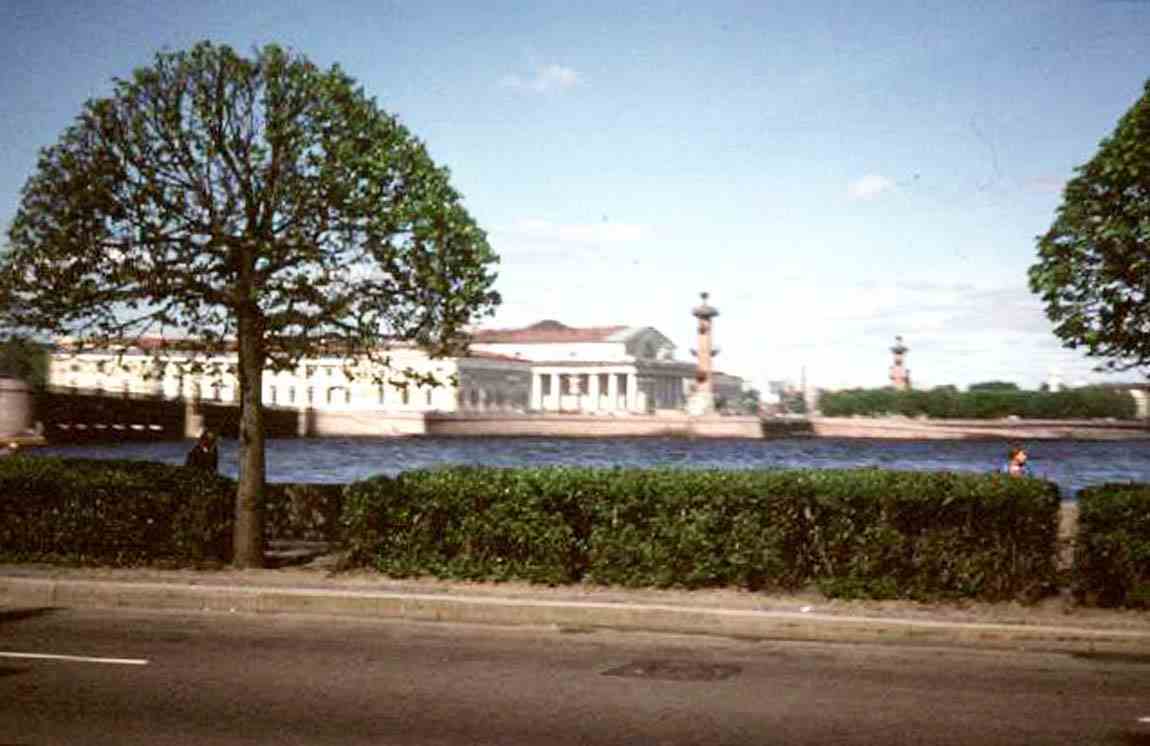

St. Isaac's Cathedral. It was erected to a design by Auguste Montferrand between 1818 and 1858.
It can hold 14,000 people. The entire building is faced with marble
and there are 112 columns hewn out of red granite obtained from quarries in Finland.
It is currently a museum.
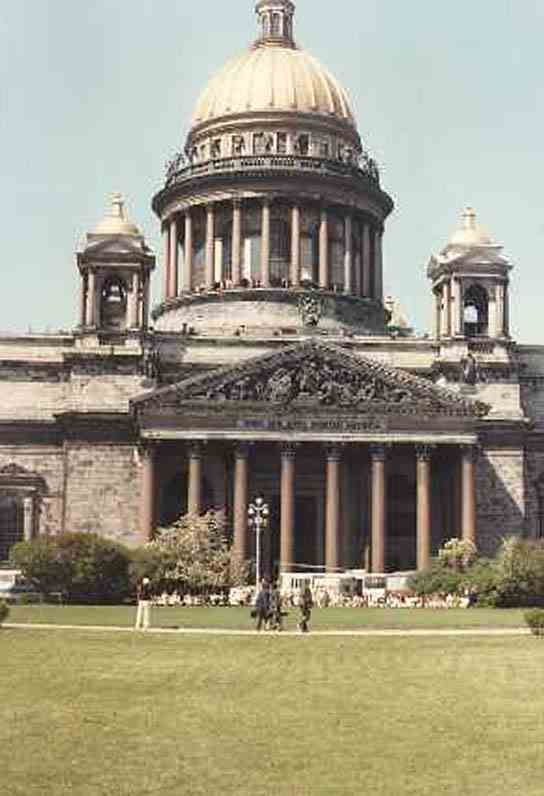
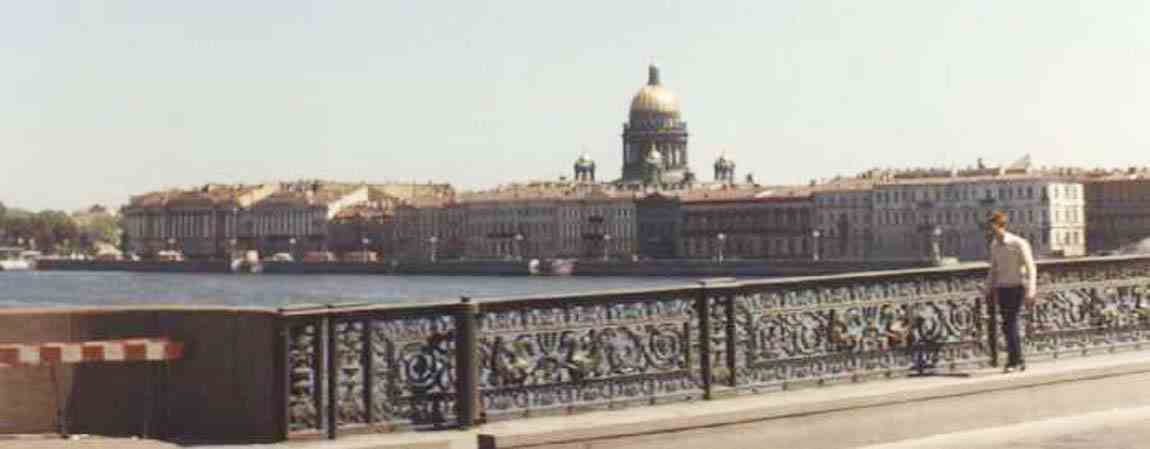


The gilded spire of The Admiralty Building, the former headquarters of the Russian navy from 1711 to 1917.

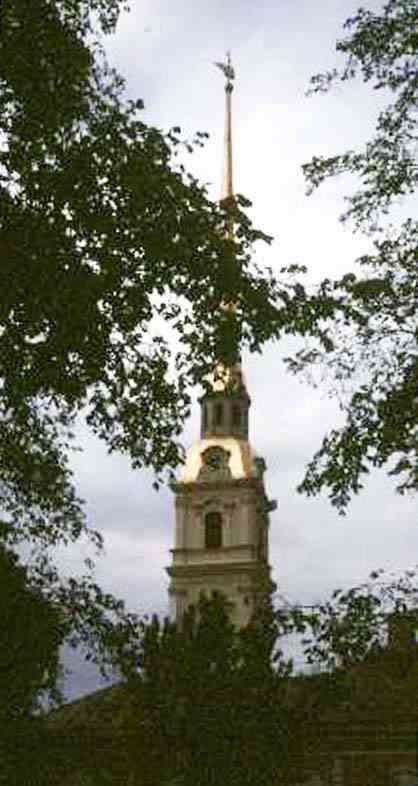
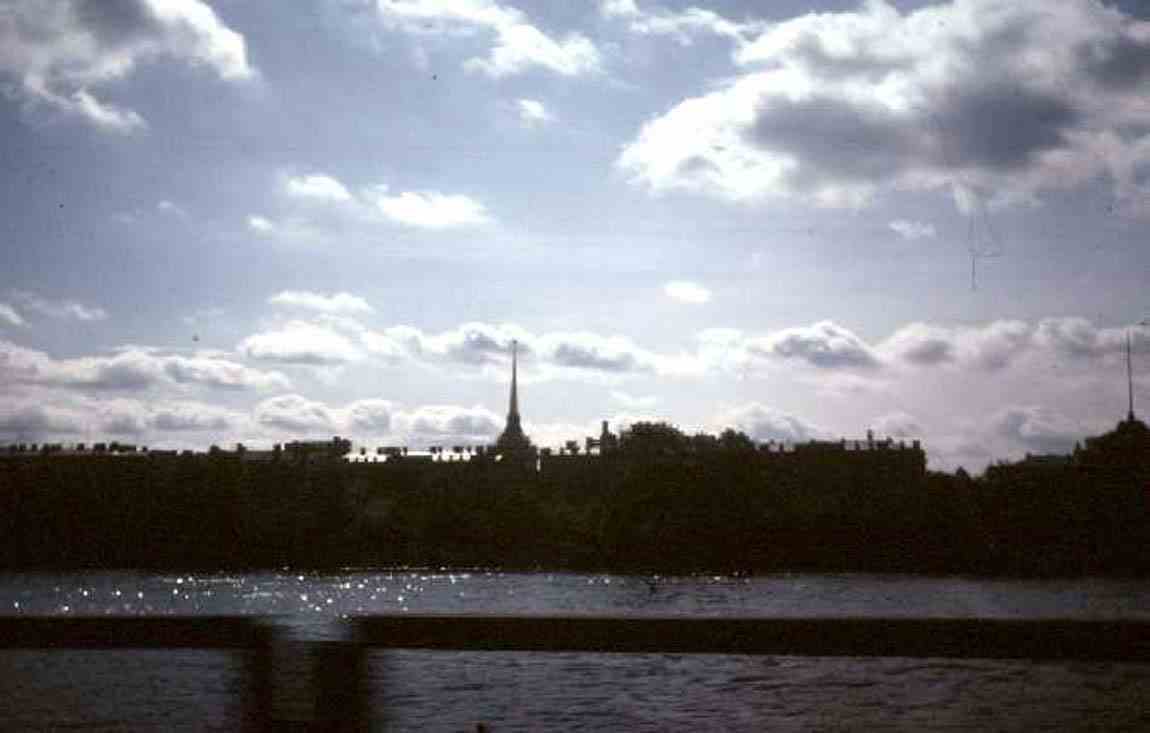

"The Bronze Horseman". Created by the French sculptor Etienne-Maurice Falconet in 1782,
it is a monument to Peter the Great. The rock base took 5 months to be transported to this spot.

The architecture of the buildings in Leningrad was fantastic.
Peterhoff (Petrodvorets), the summer estate of Peter the Great was absolutely stunning - the best thing made by man that I have seen!!
Over 140 gilded fountains. Beautiful meadow type gardens and canals.
This complex was built to celebrate the winning of a war against Sweden.
Magnificently stunning!!!
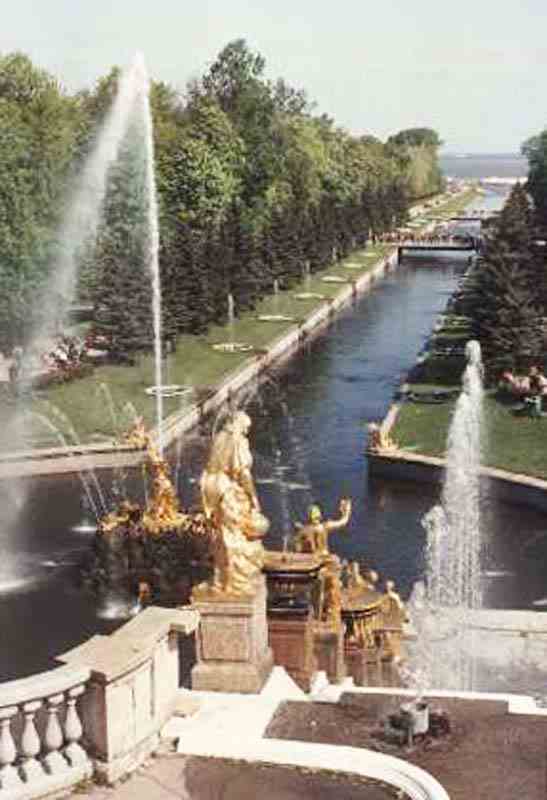
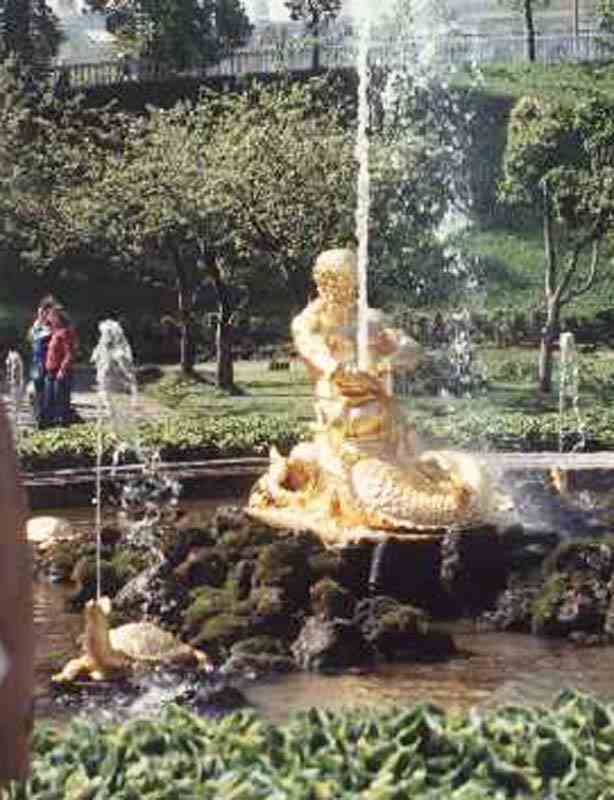
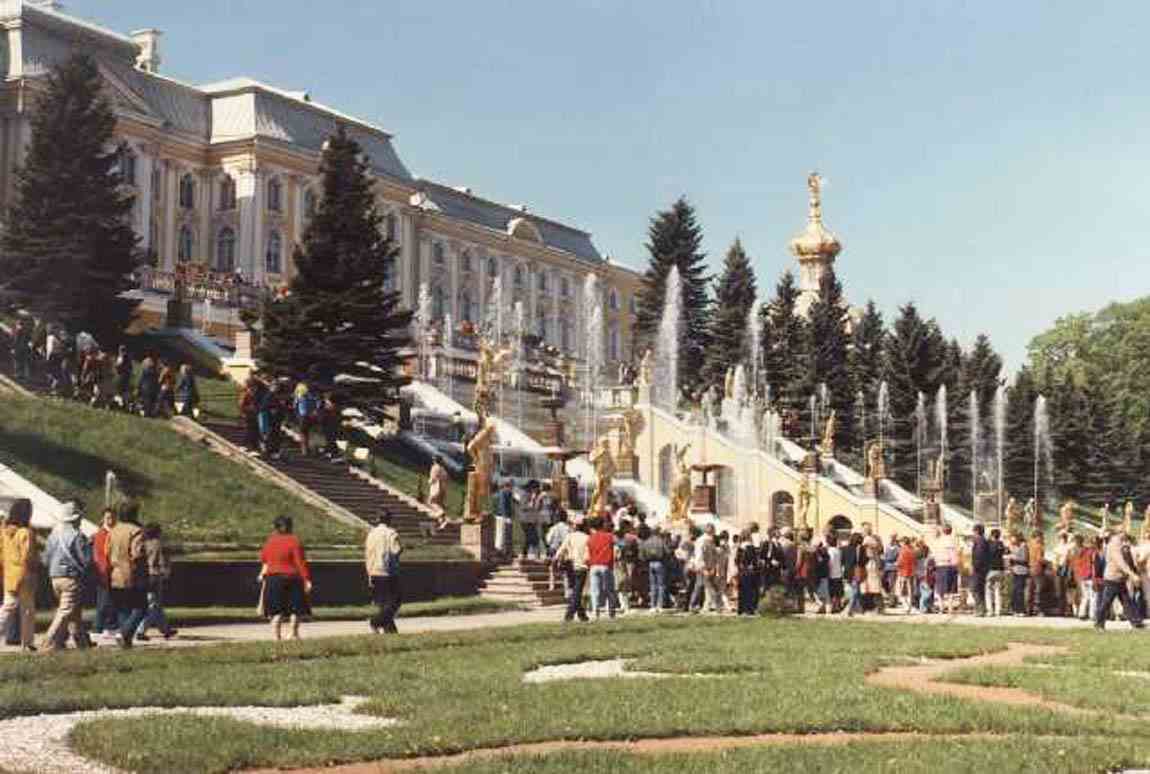

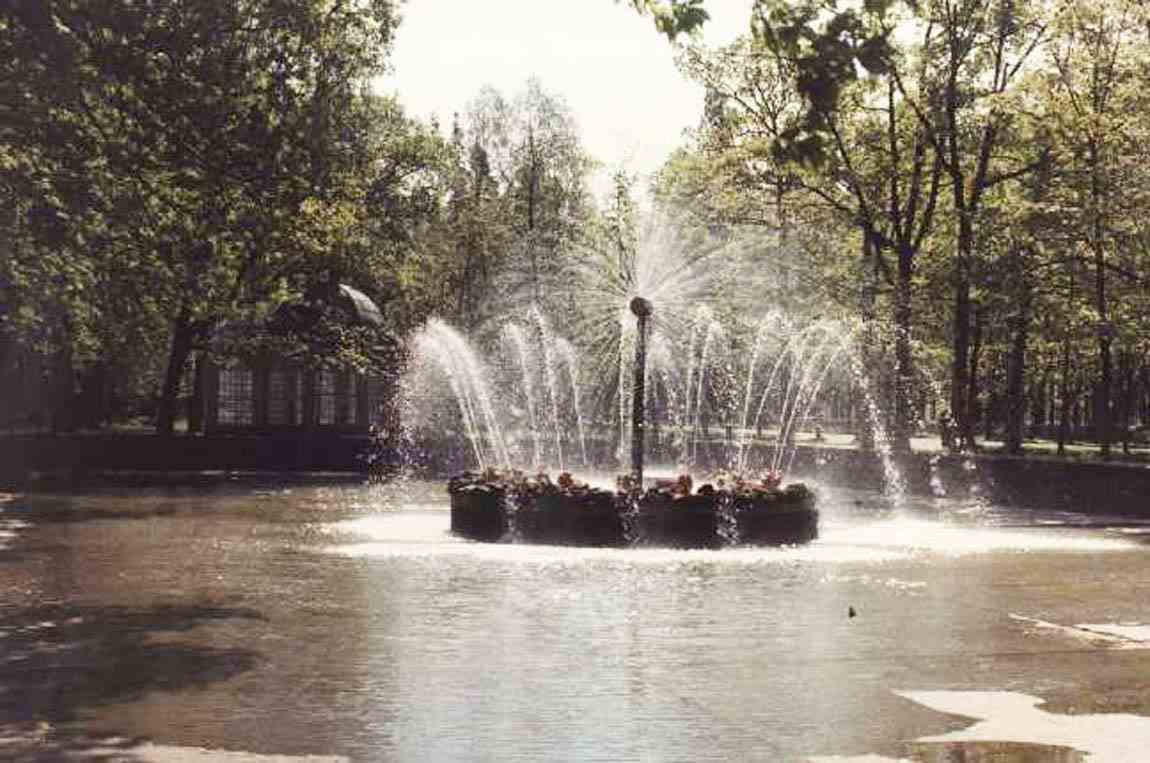
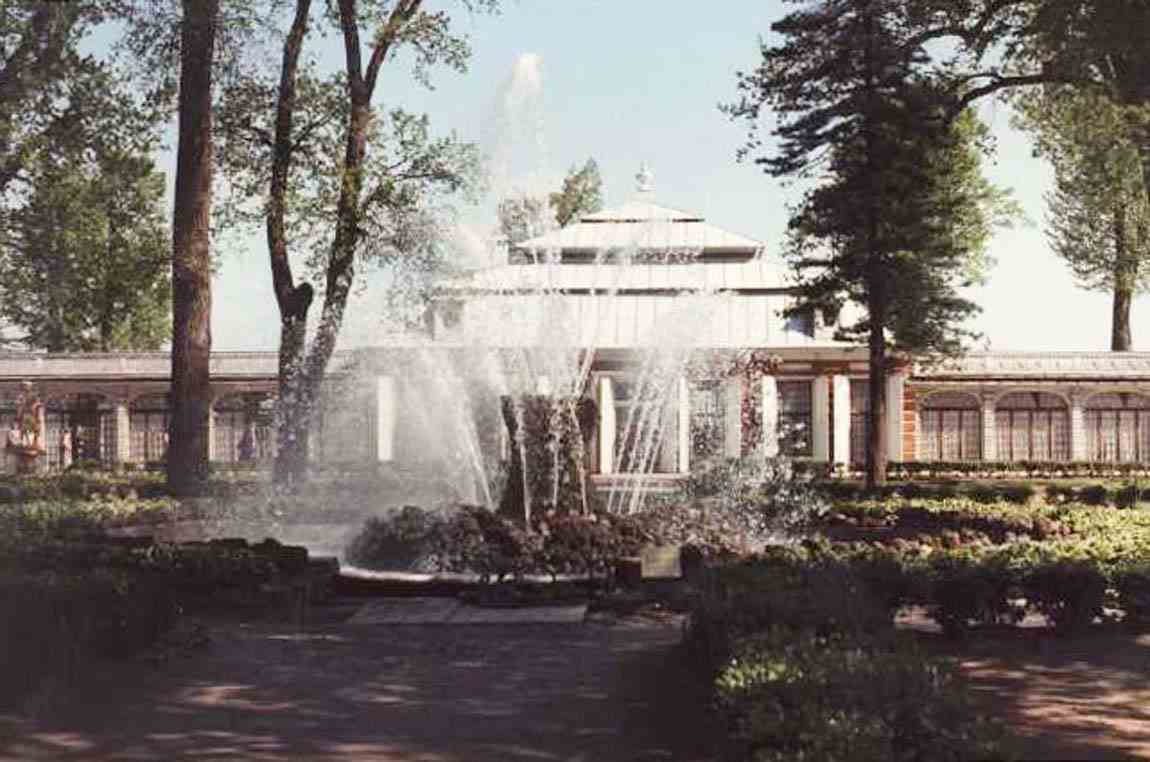
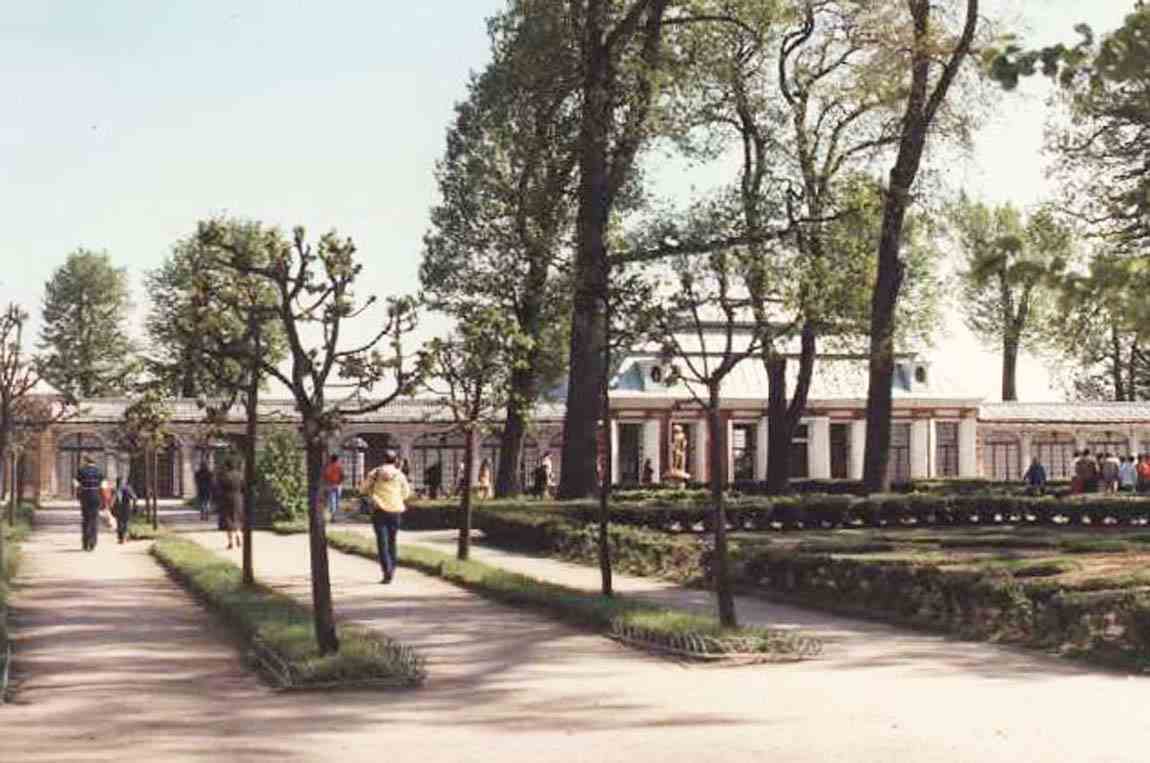





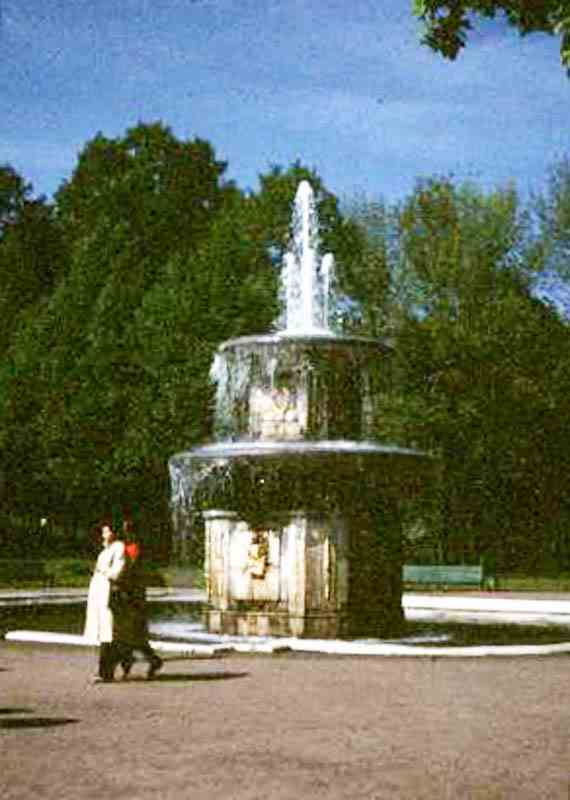


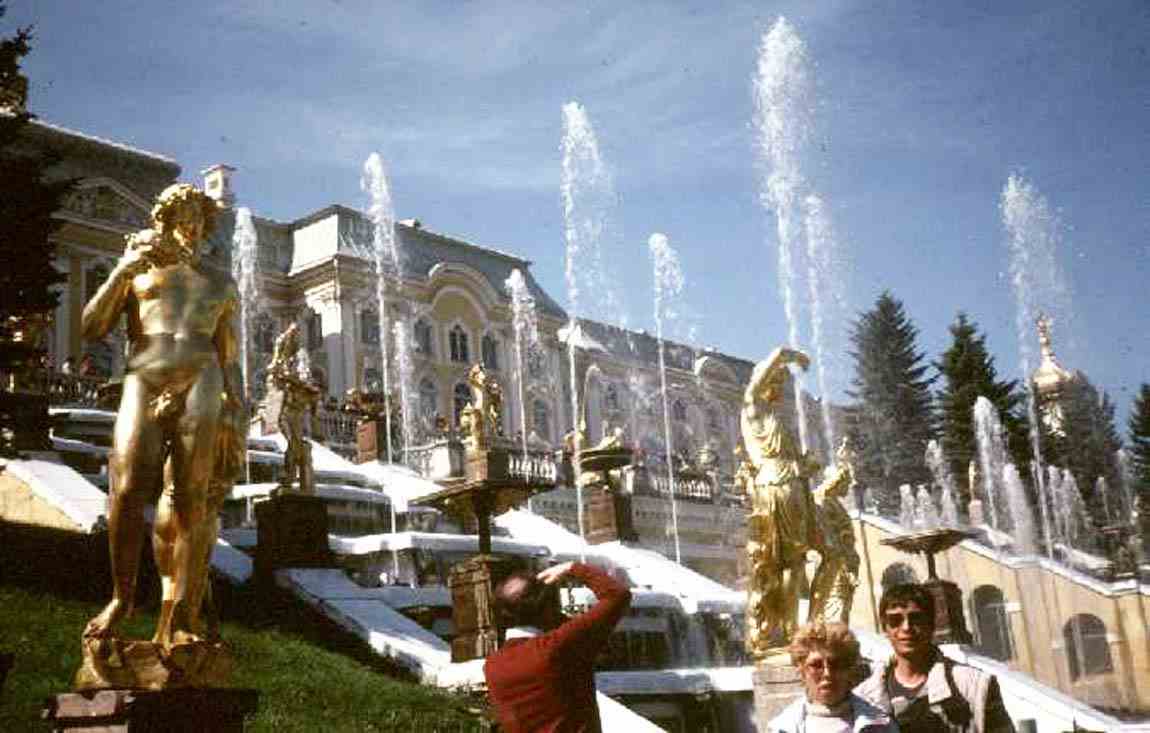
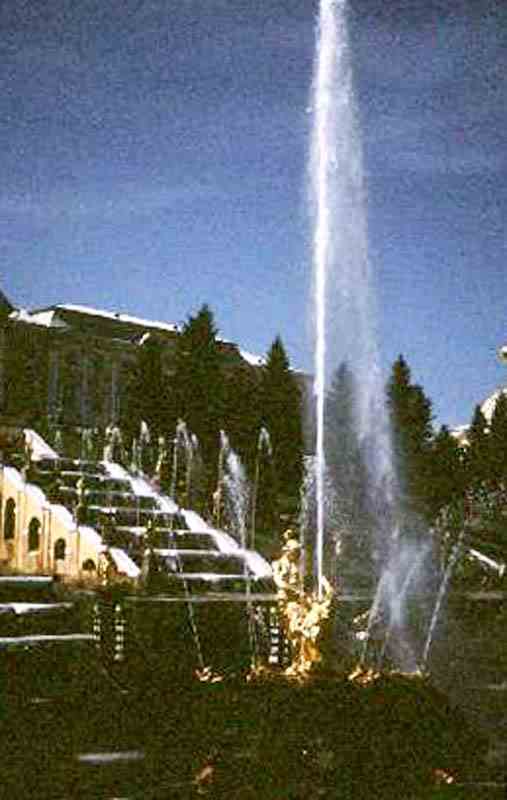
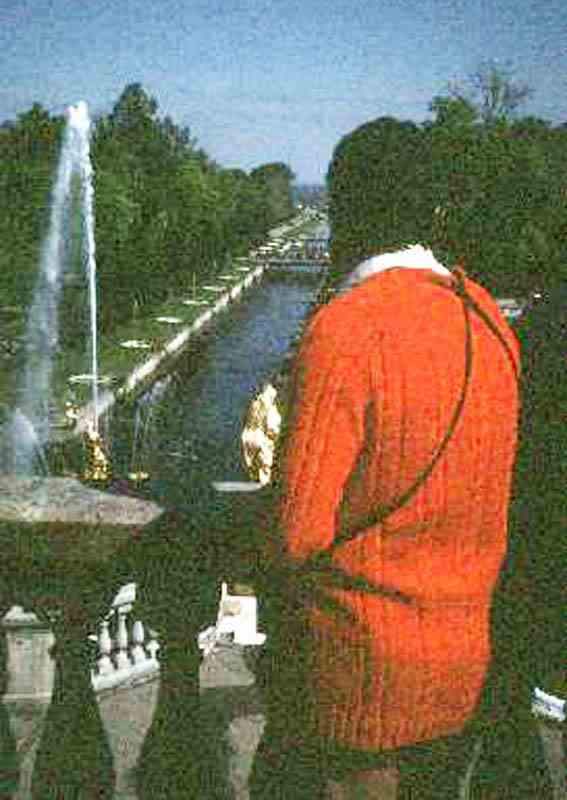

The Hermitage Museum (Winter Palace).
With over 3,000,000 objects de art and over 2000 rooms it is the largest museum in the world.
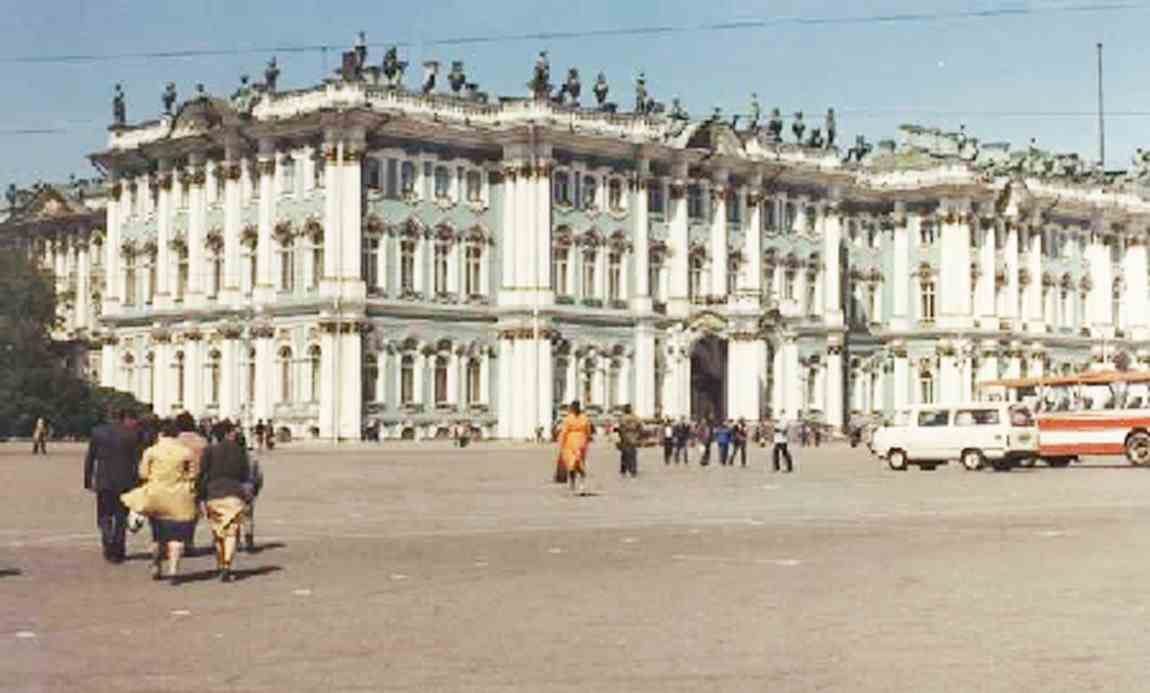
Looking across Palace Square to the Hermitage Museum.
With over 3,000,000 objects de art and over 2000 rooms it is the
largest museum in the world.
We saw
paintings by Rembrant (2 rooms), Rubens, Van Gough, Monet, Picasso etc.
etc.
Absolutely mind blowing stuff. Could literally spend a month there.
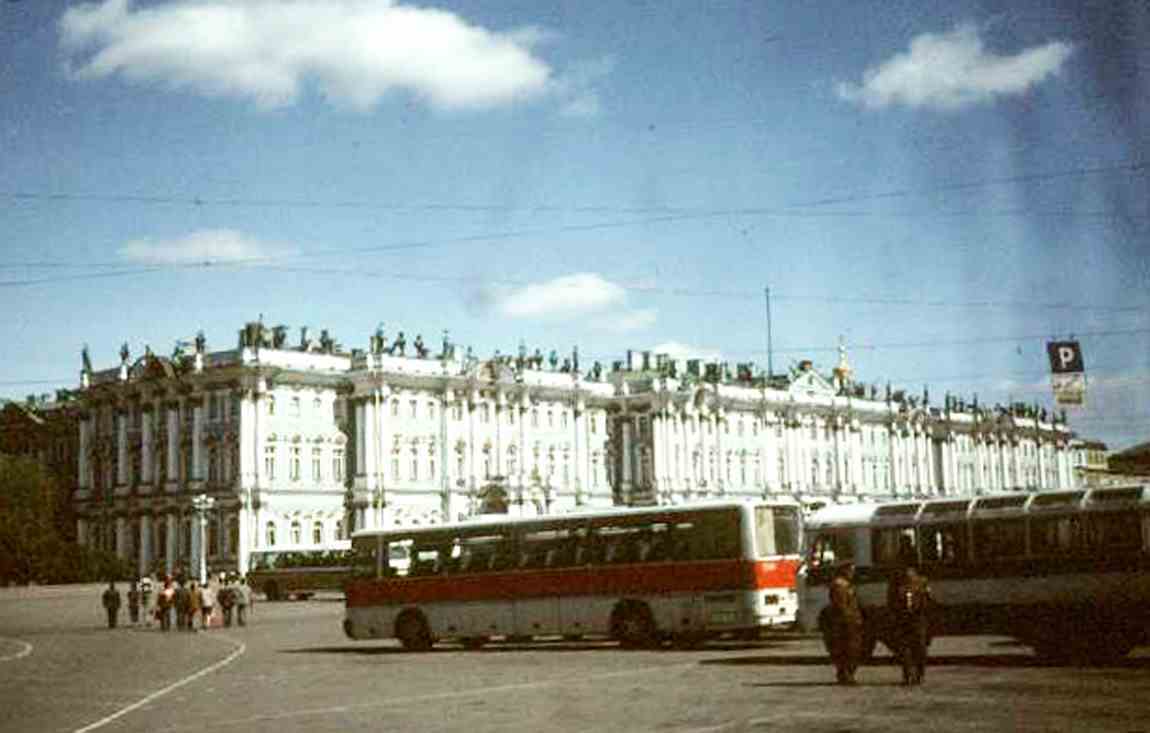
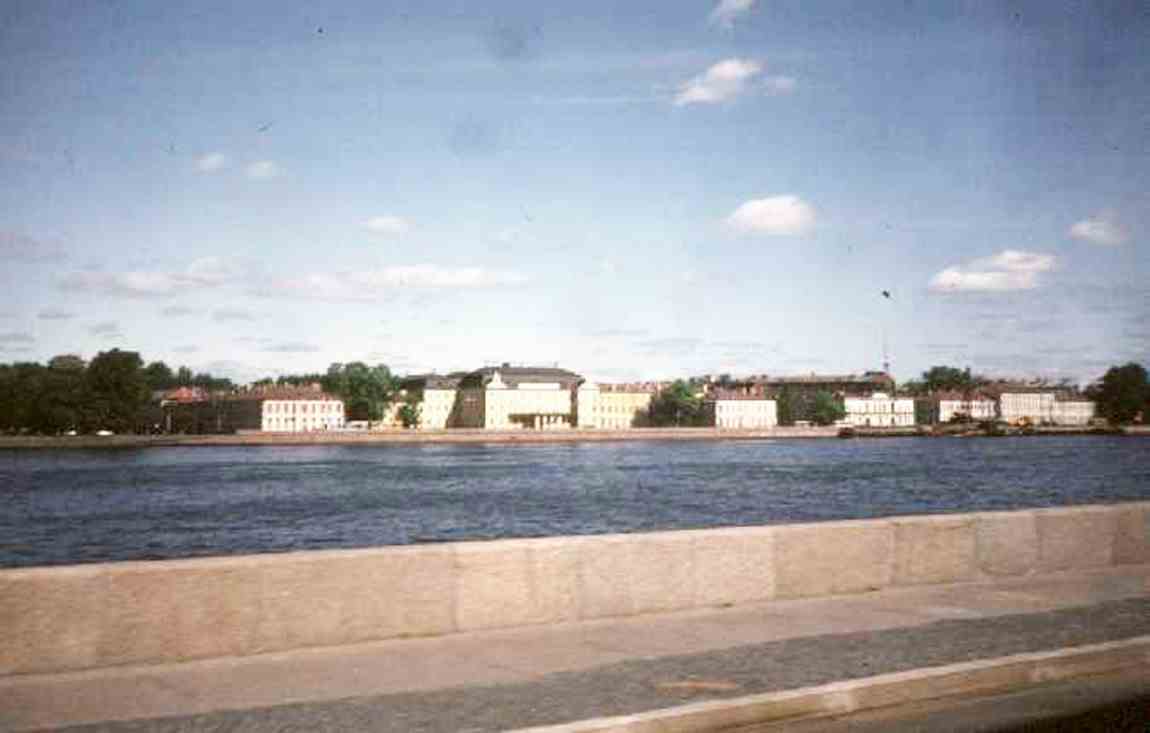
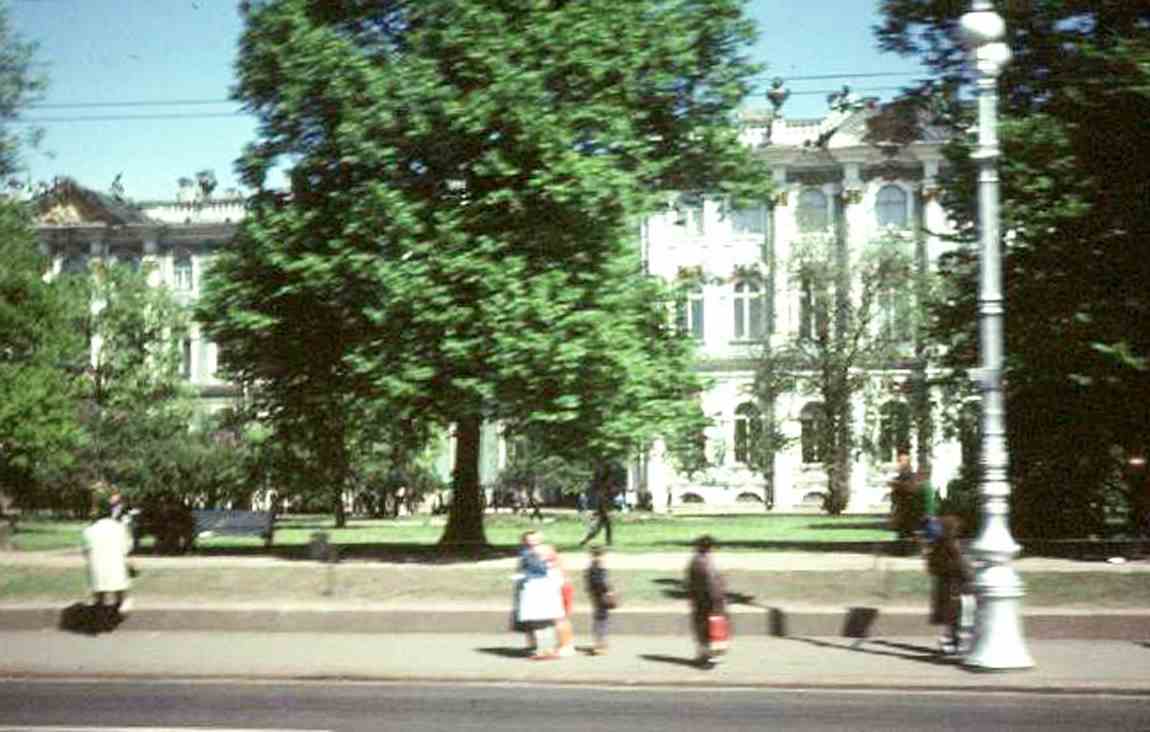
The Triumphal Arch of the General Staff Building. Crowning the arch is the sculpture of the chariot of victory drawn by 6 horses.
The Alexander Column on the left is hewn out of a single block of granite. It honours the Russian victory over Napoleon in 1812 during the reign of Alexander 1.
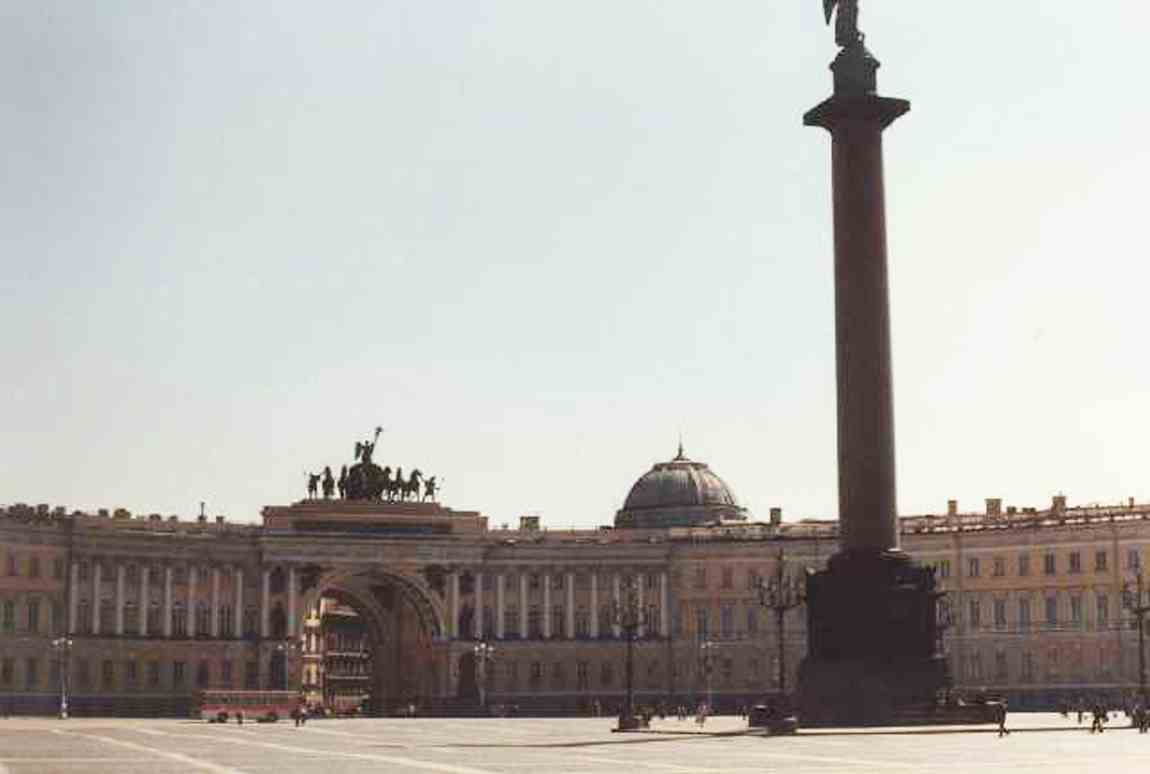
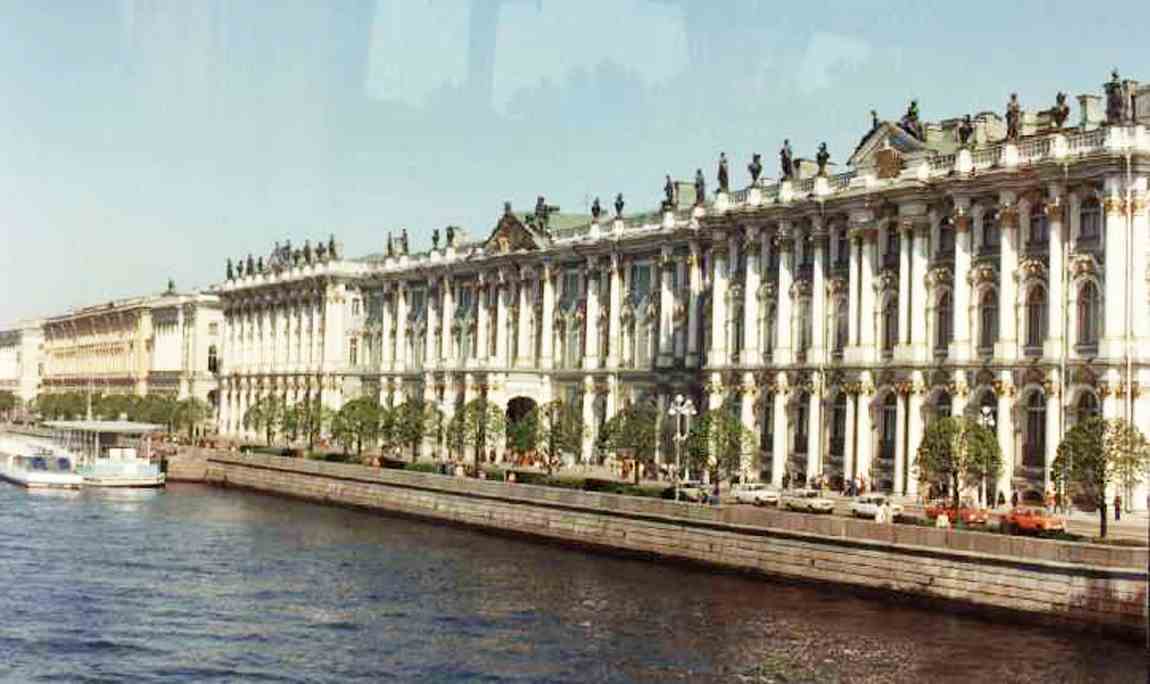
June 7th 1985 - a mind blowing day. Firstly the magnificent fountains, canals and gardens at Peterhoff in the morning.
In the afternoon the sensational Hermitage museum.
At night we went to a superb Georgian dance and singing concert at the concert hall at the Hotel Leningrad.
Absolutely amazing what they could do with black and white costumes. An amazing day!!
Pavlovsk - the great palace of Paul 1, the son of Catherine 2.
In one room 300 people could dine, including one table that had a full dining setting for 60 people.

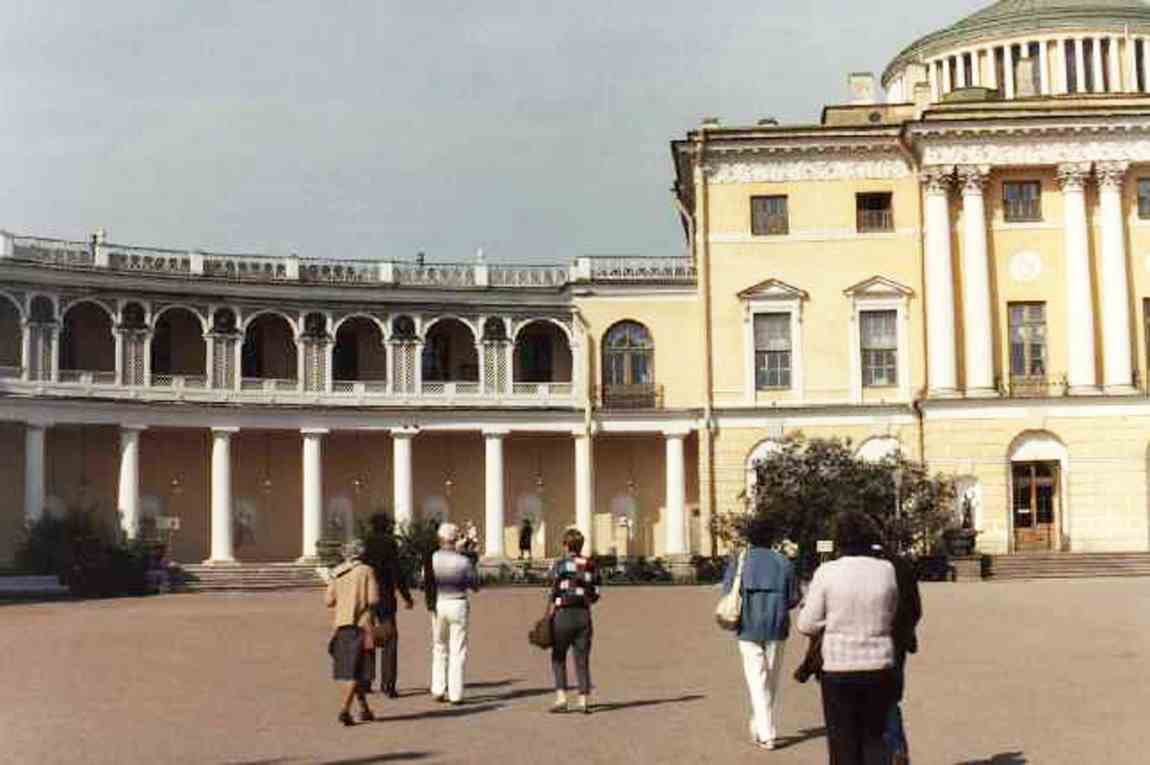
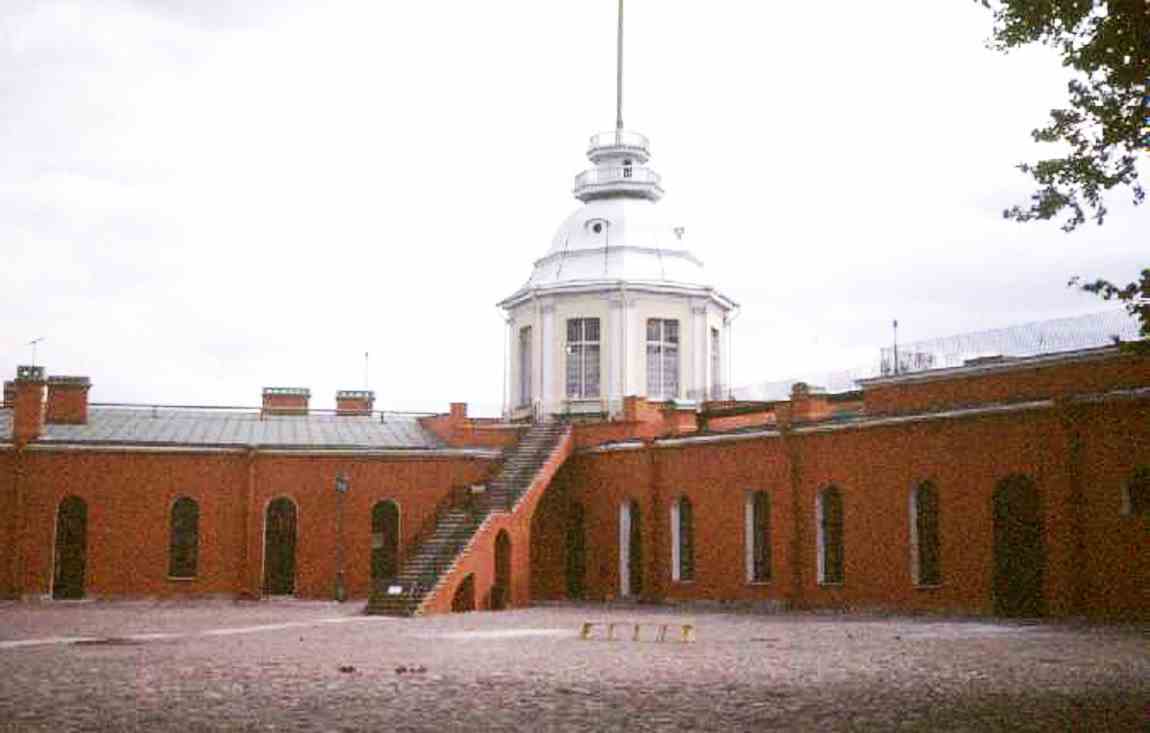




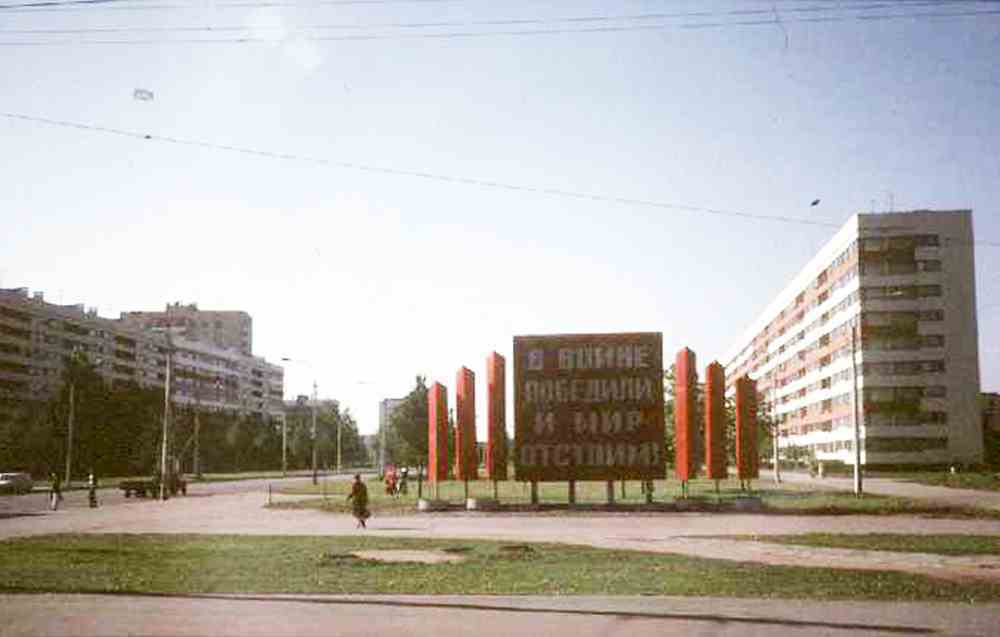

We left Leningrad on the night train to travel back to Moscow after an amazing 3 days in Leningrad.
Fantastic buildings. It is my favourite city in the world!
After Moscow, the train journey continued through Poland, East and West Germany to the Hook of Holland near Rotterdam in The Netherlands.
From there we had a ferry crossing to Harwich in England and lastly a train journey to London.
A month from Melbourne to London.